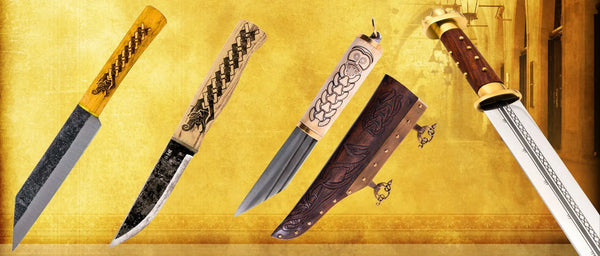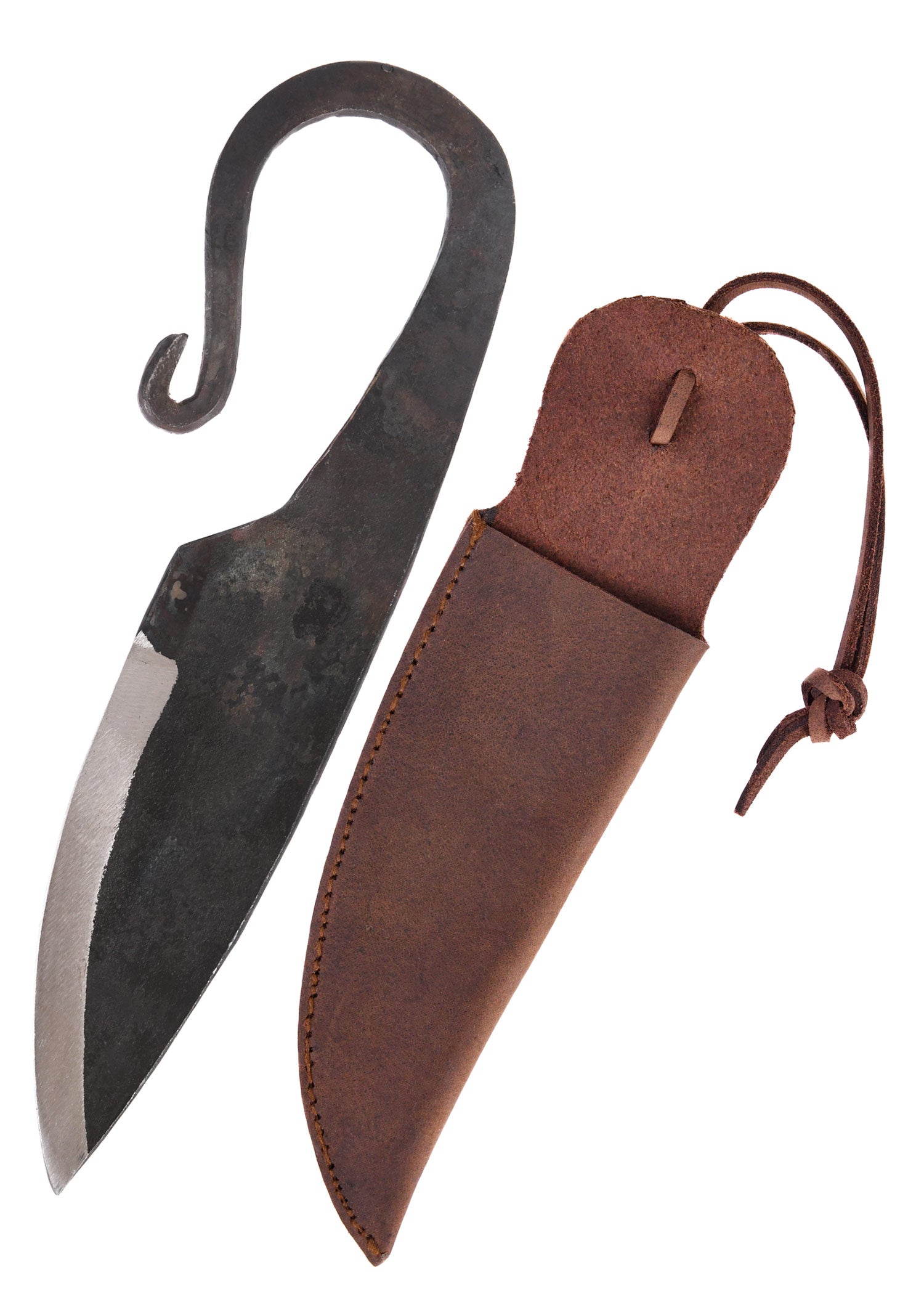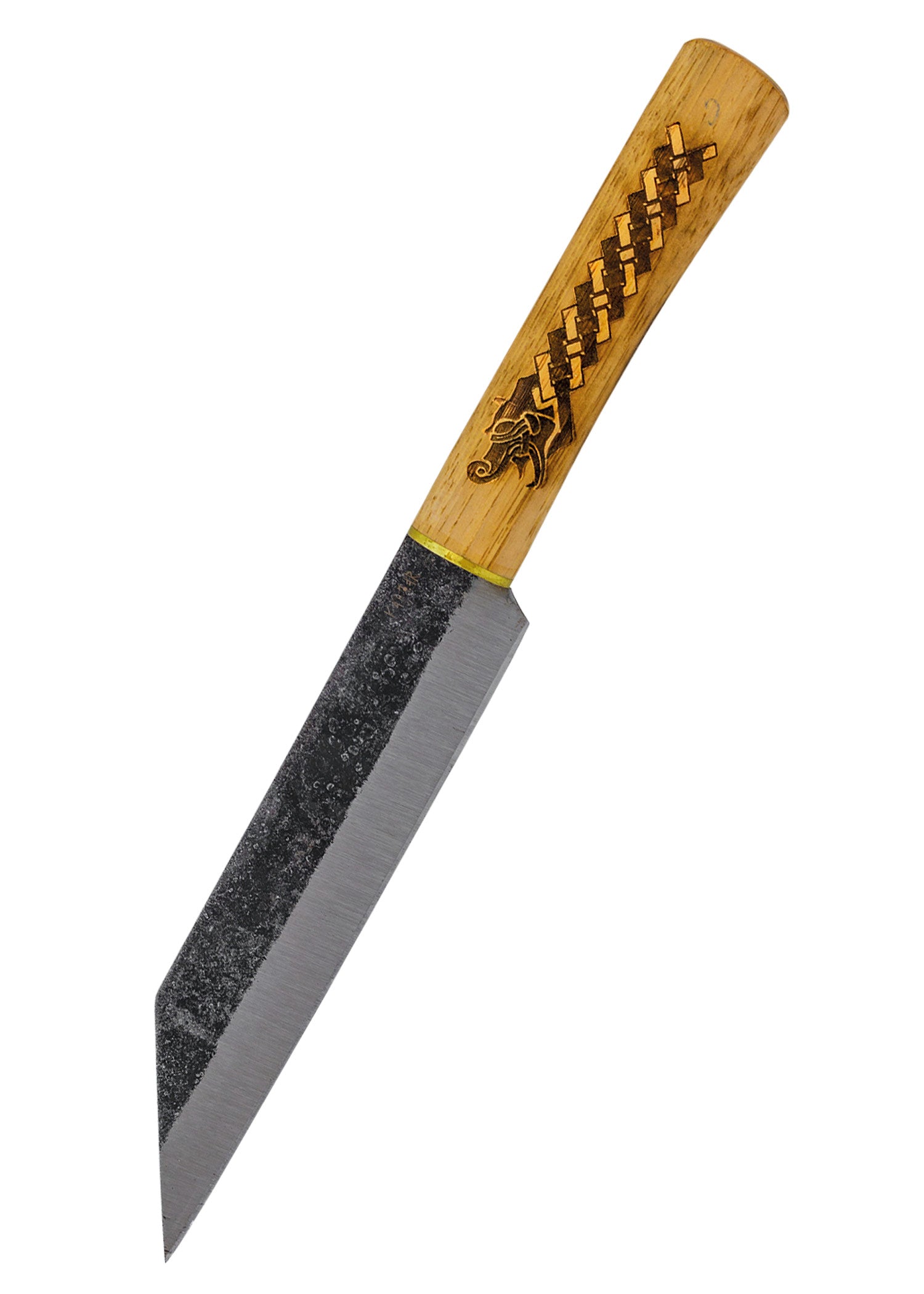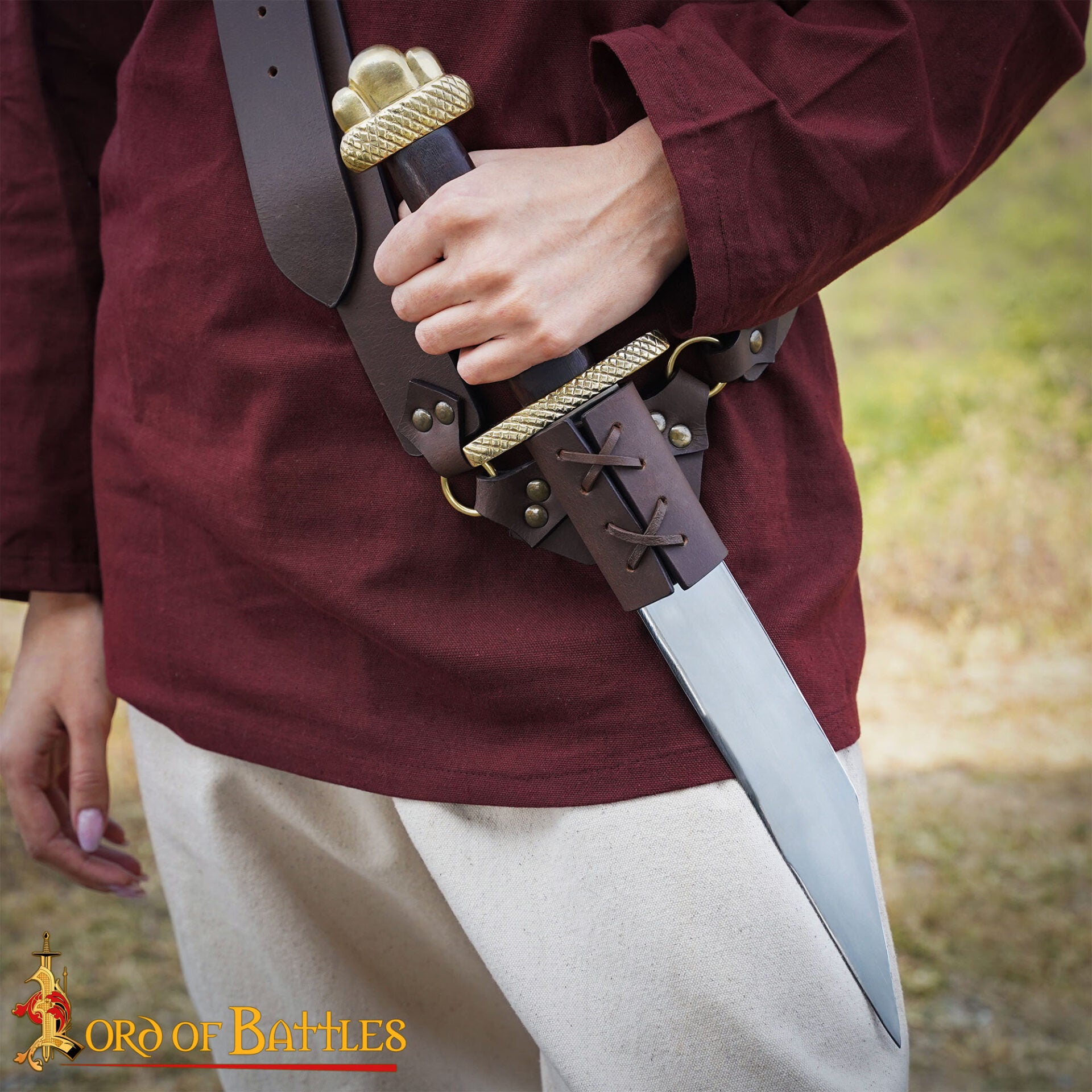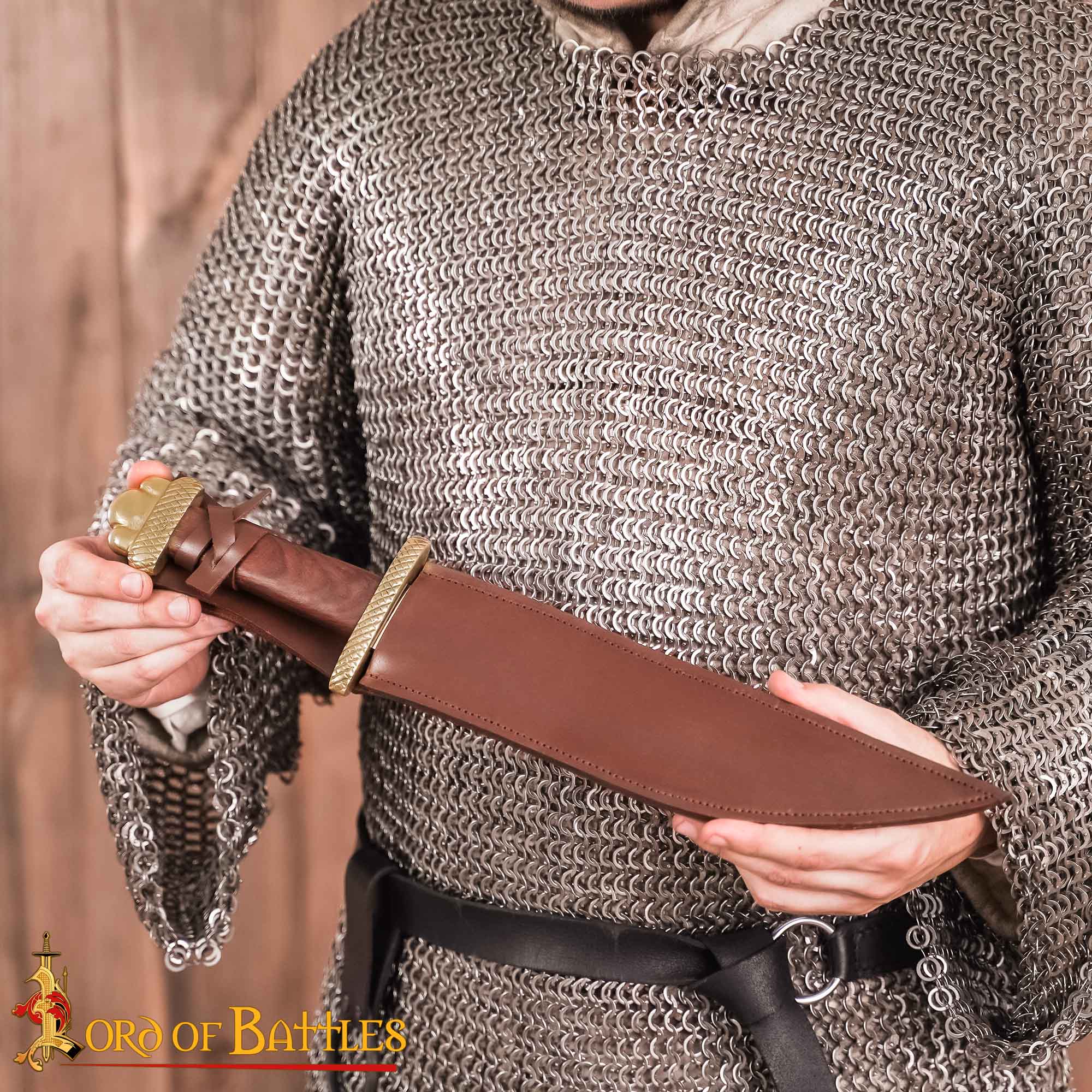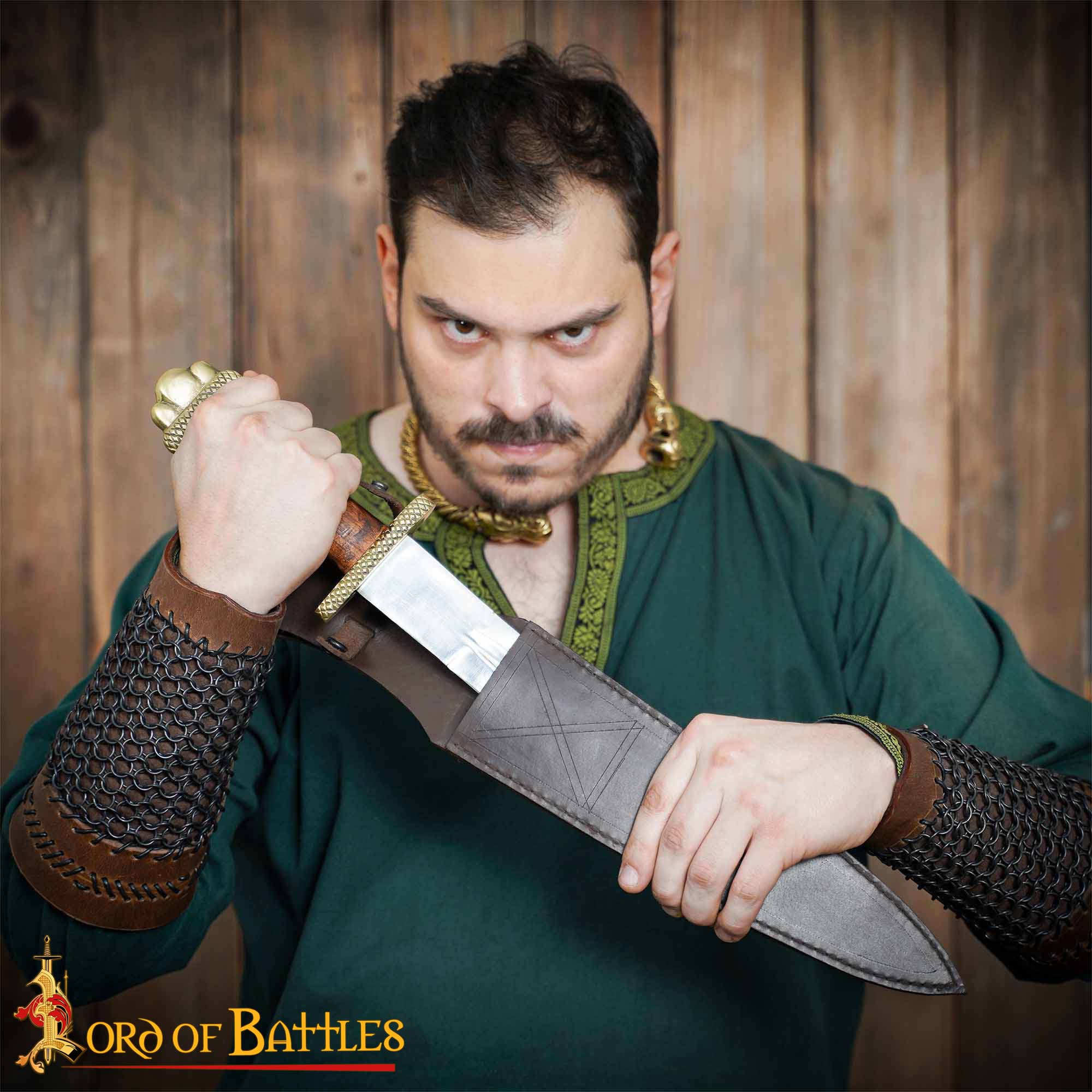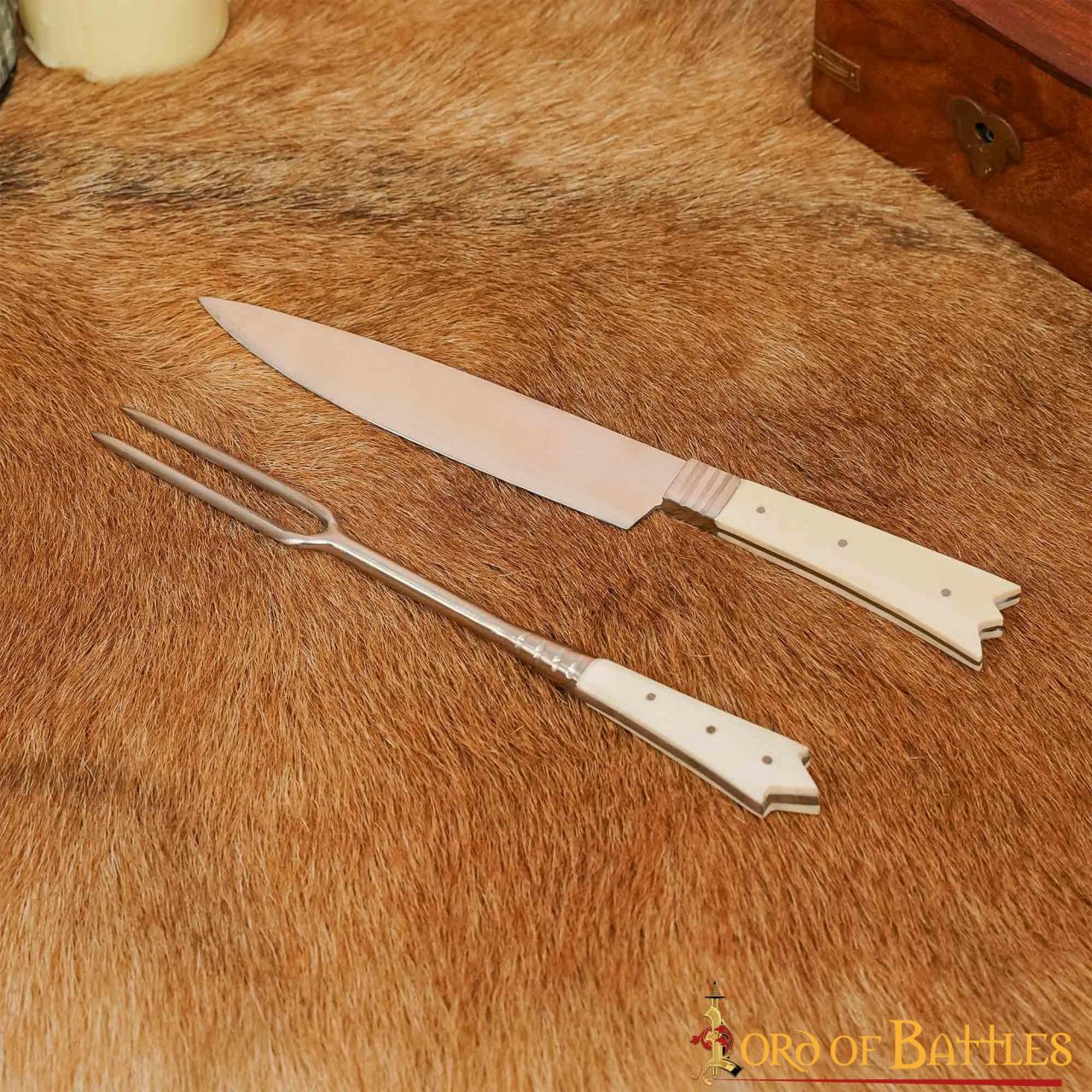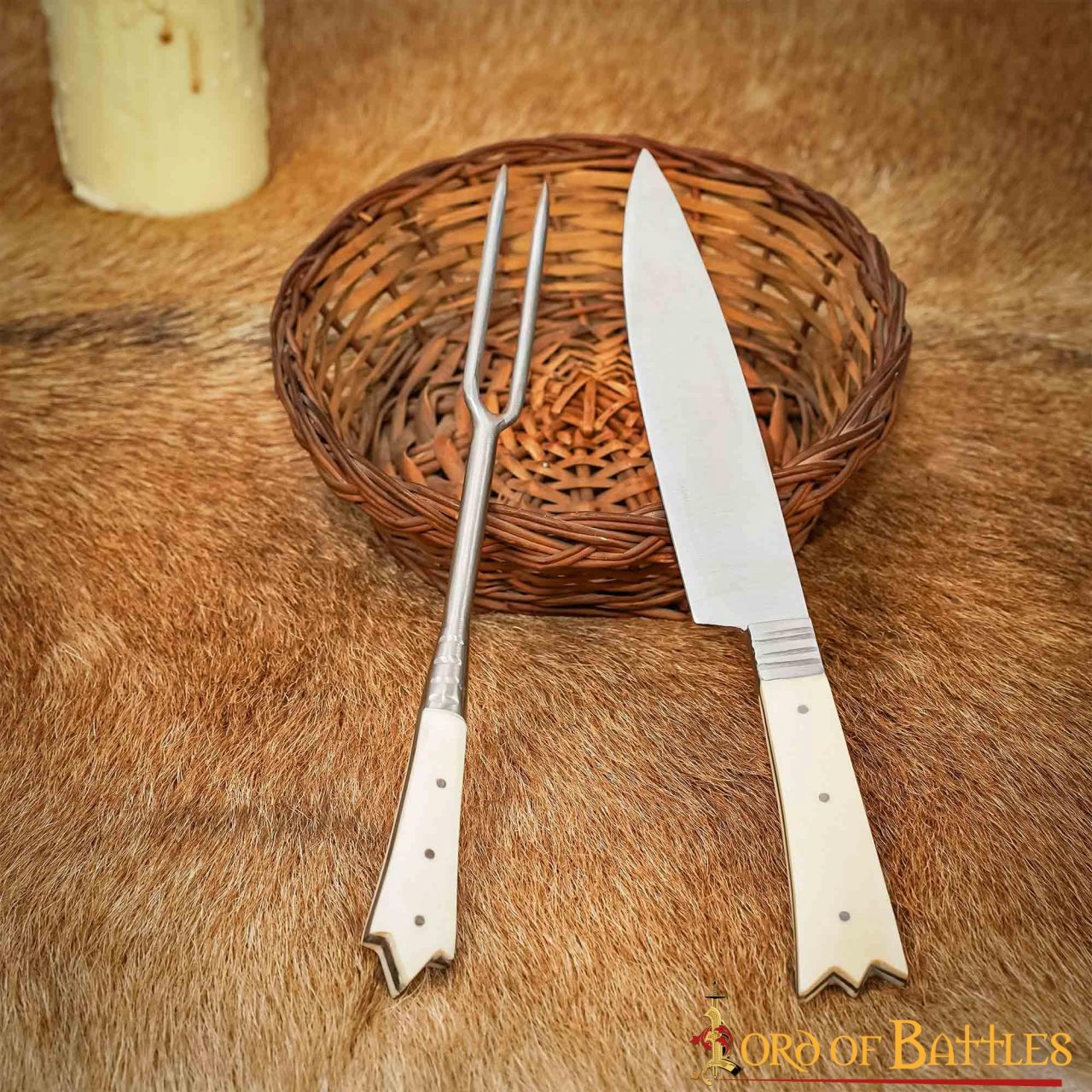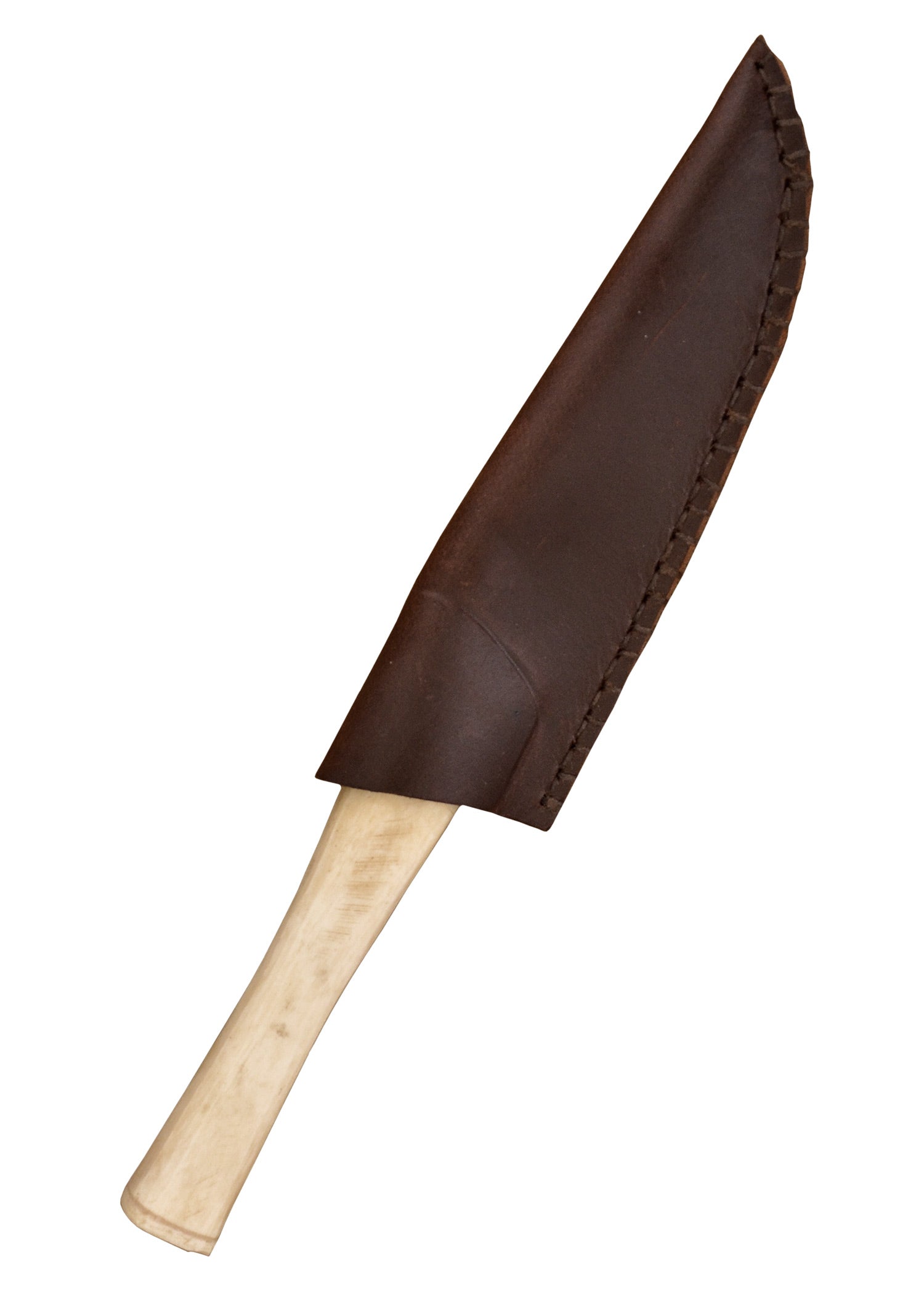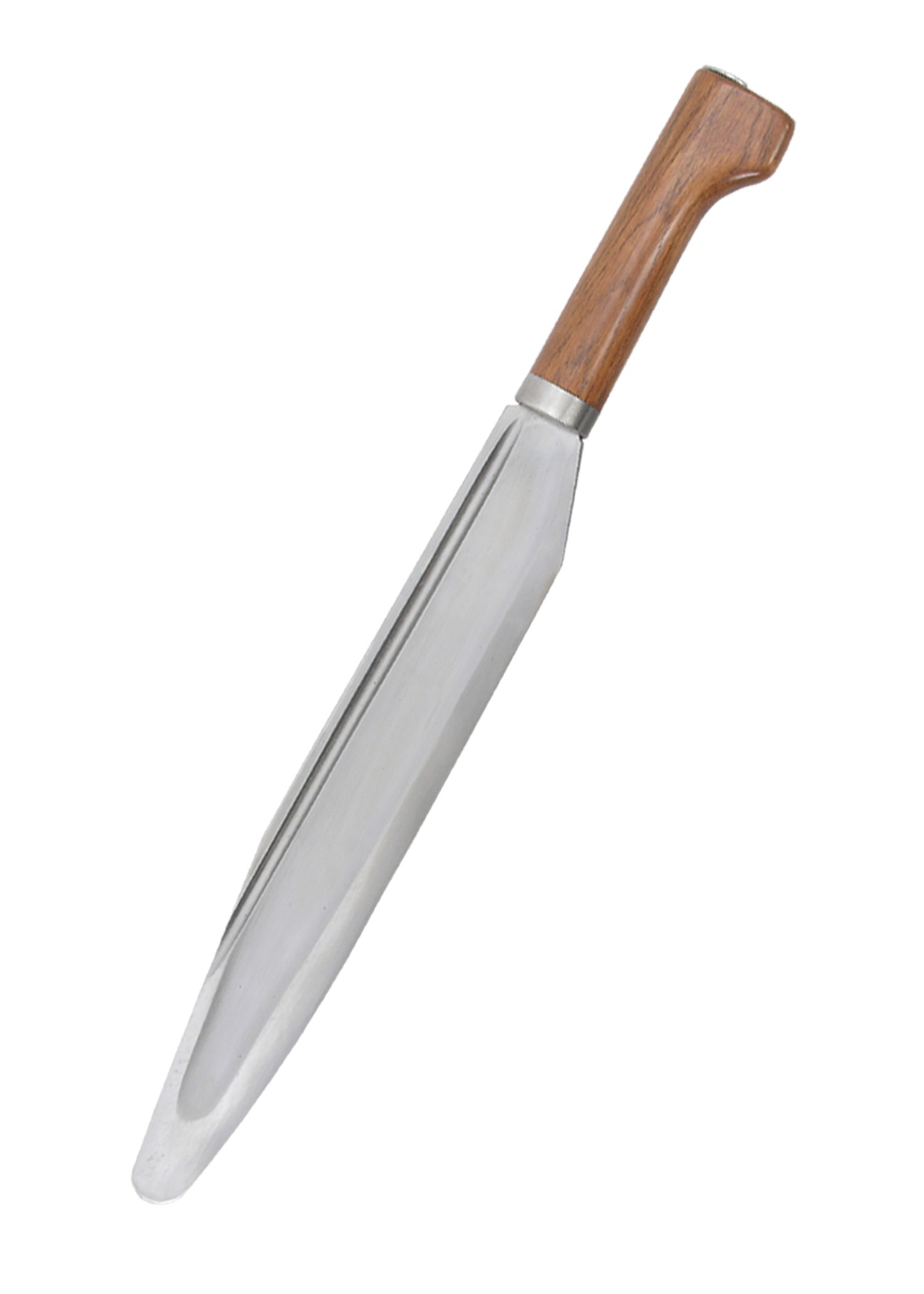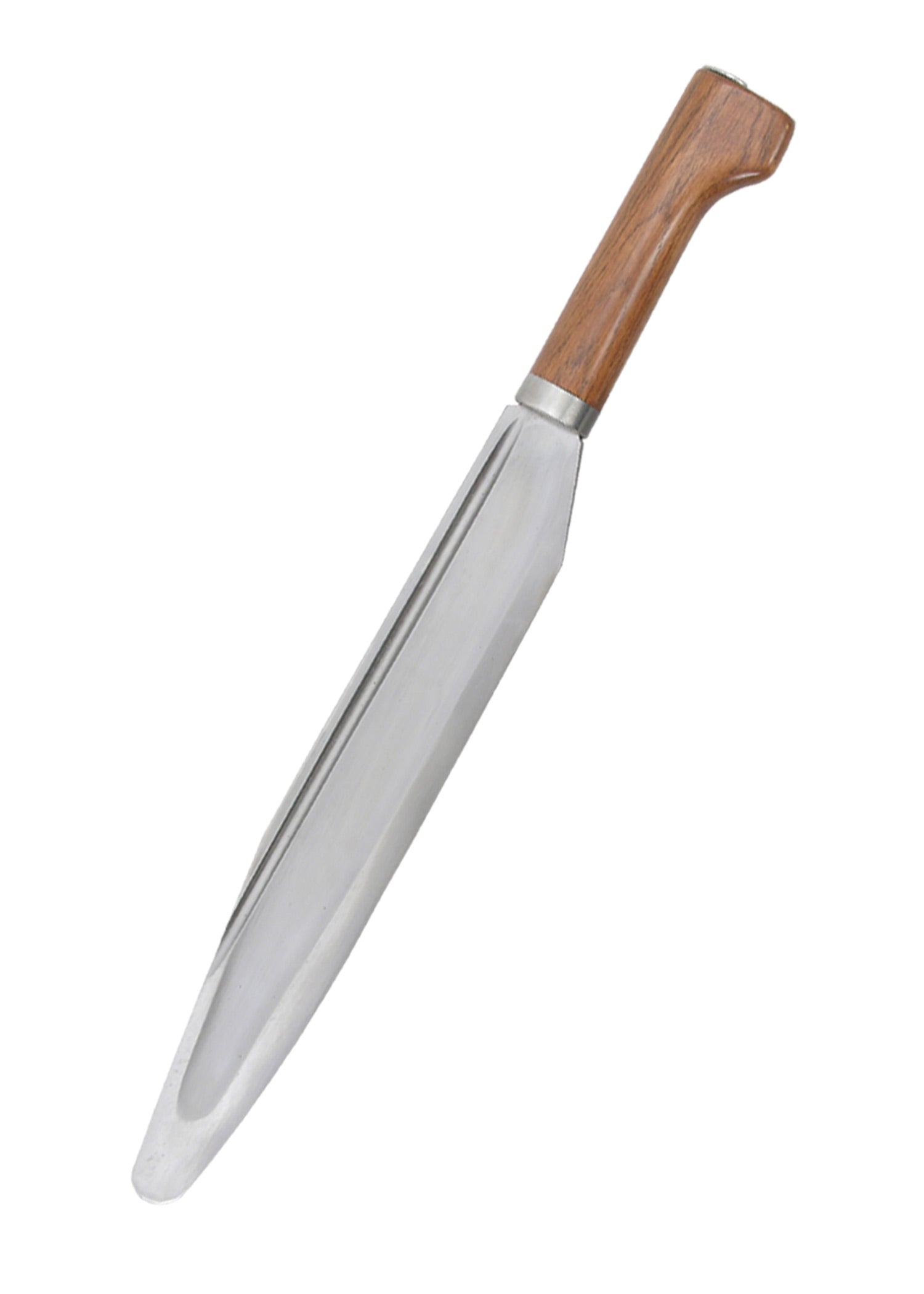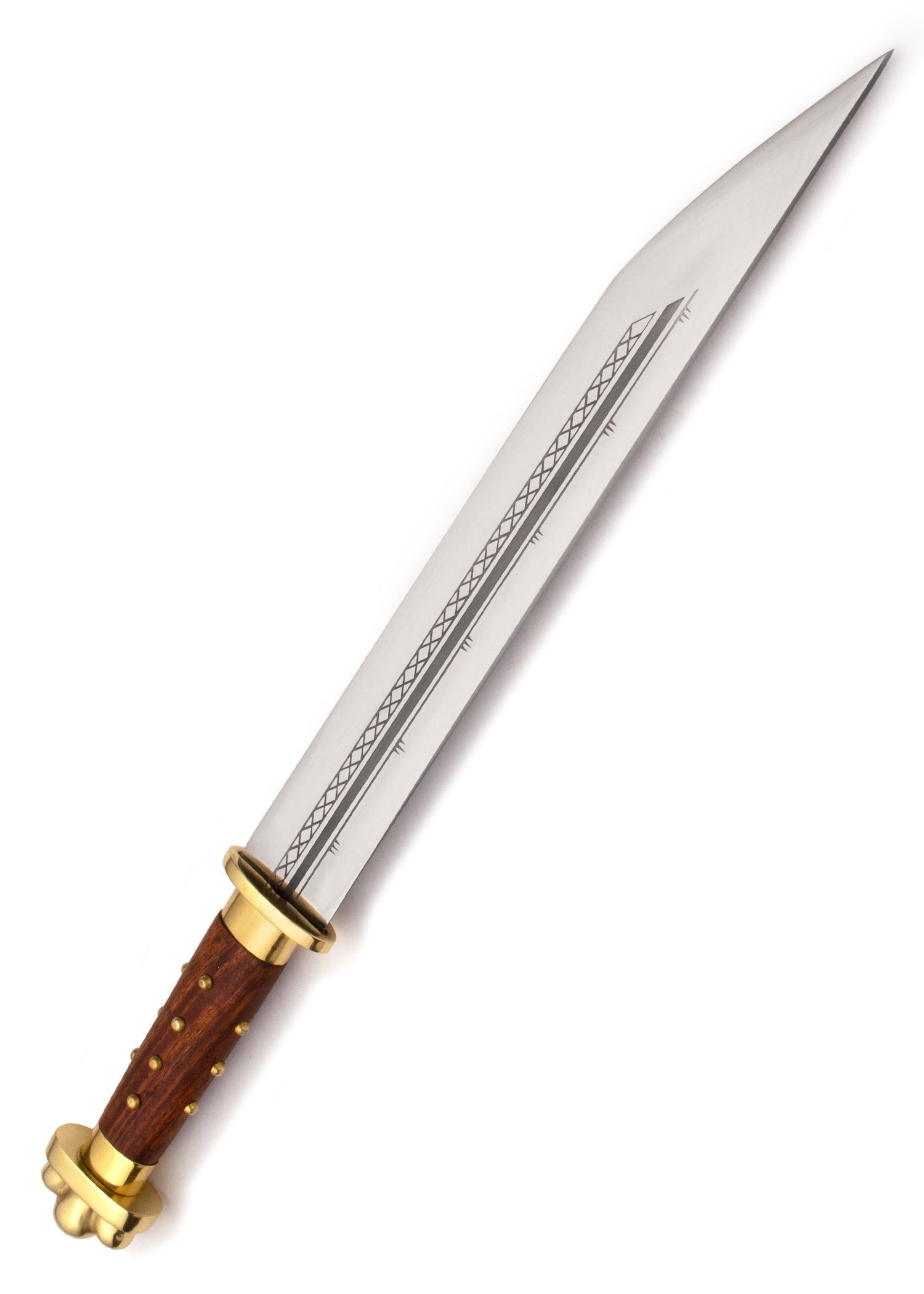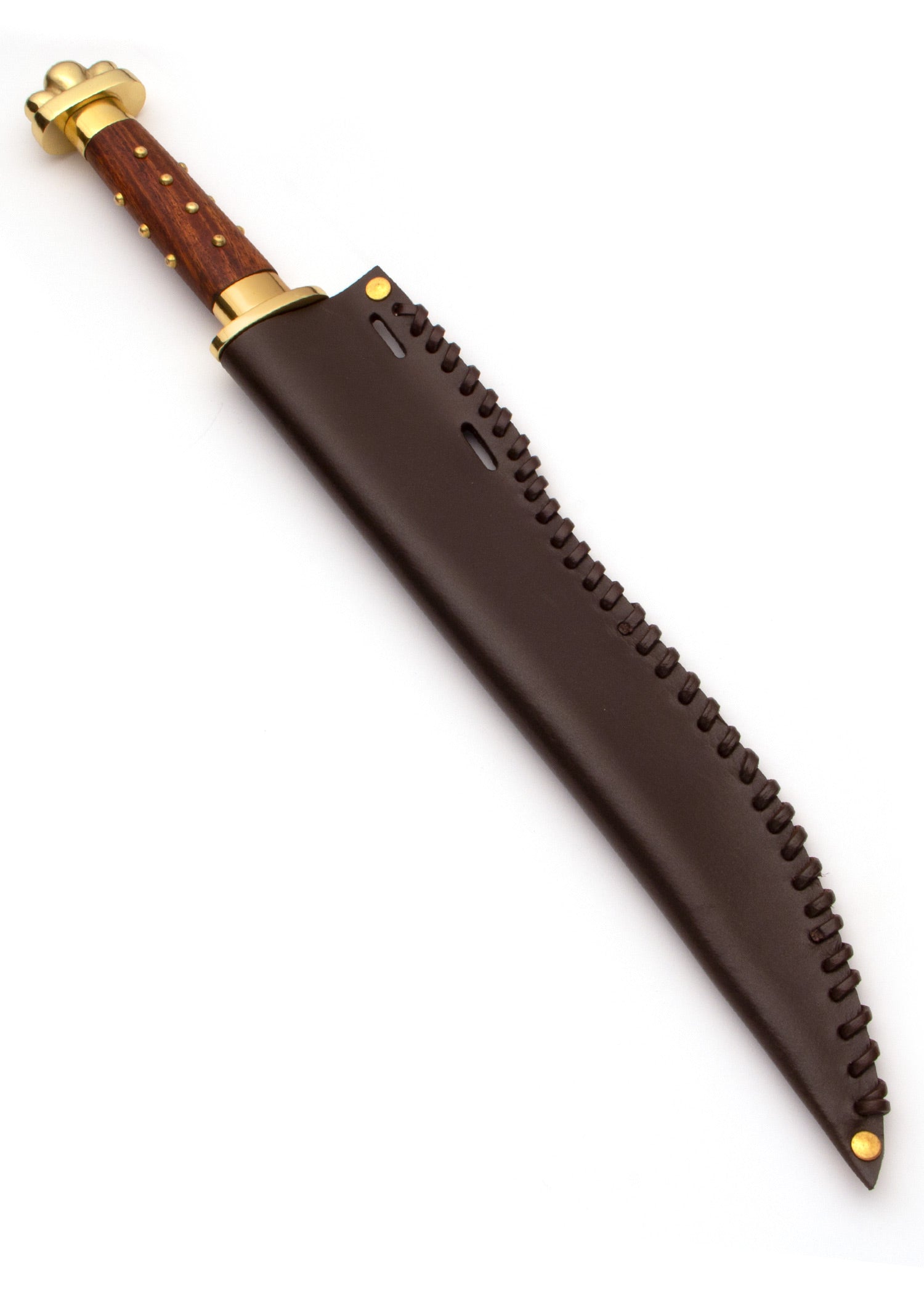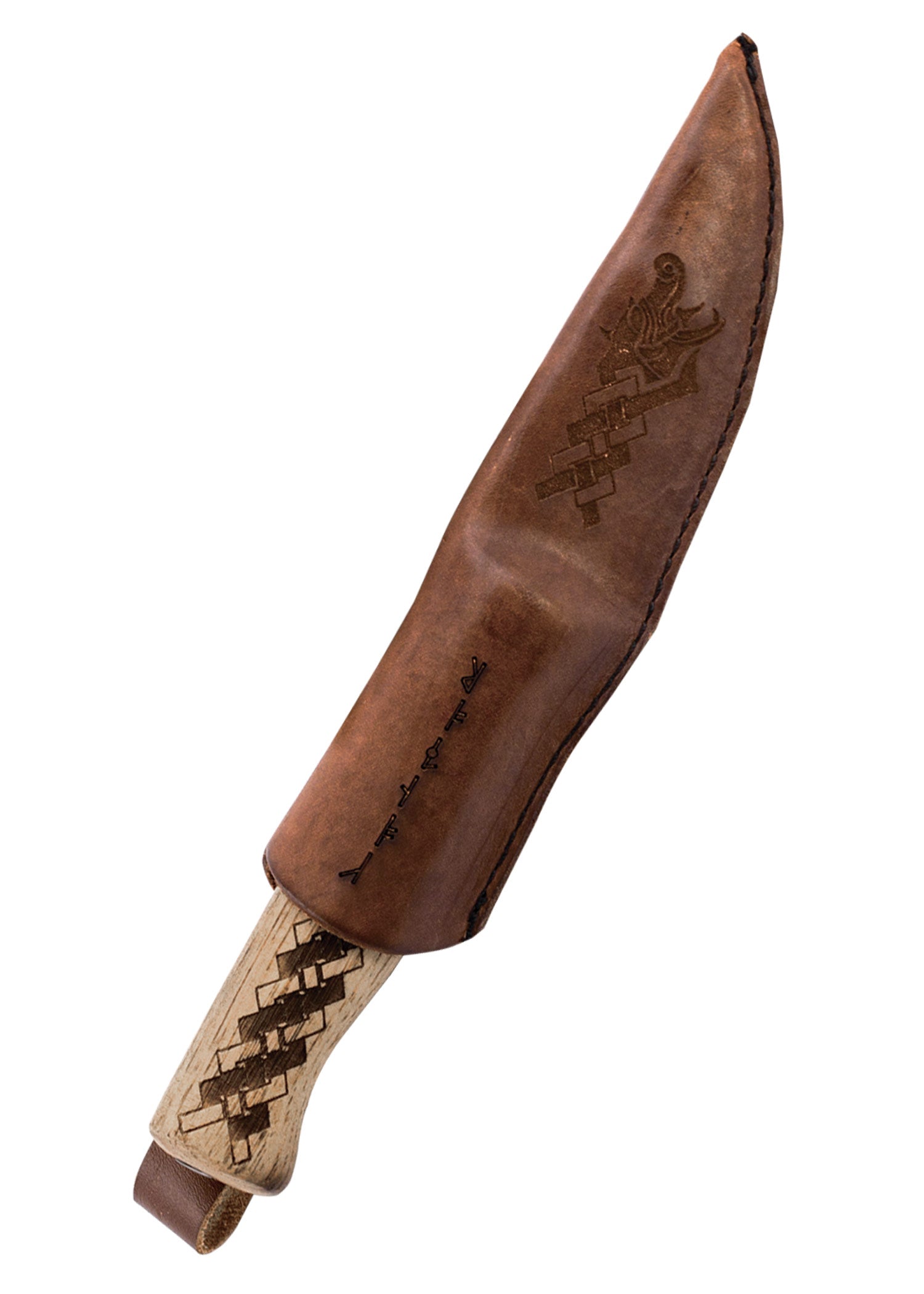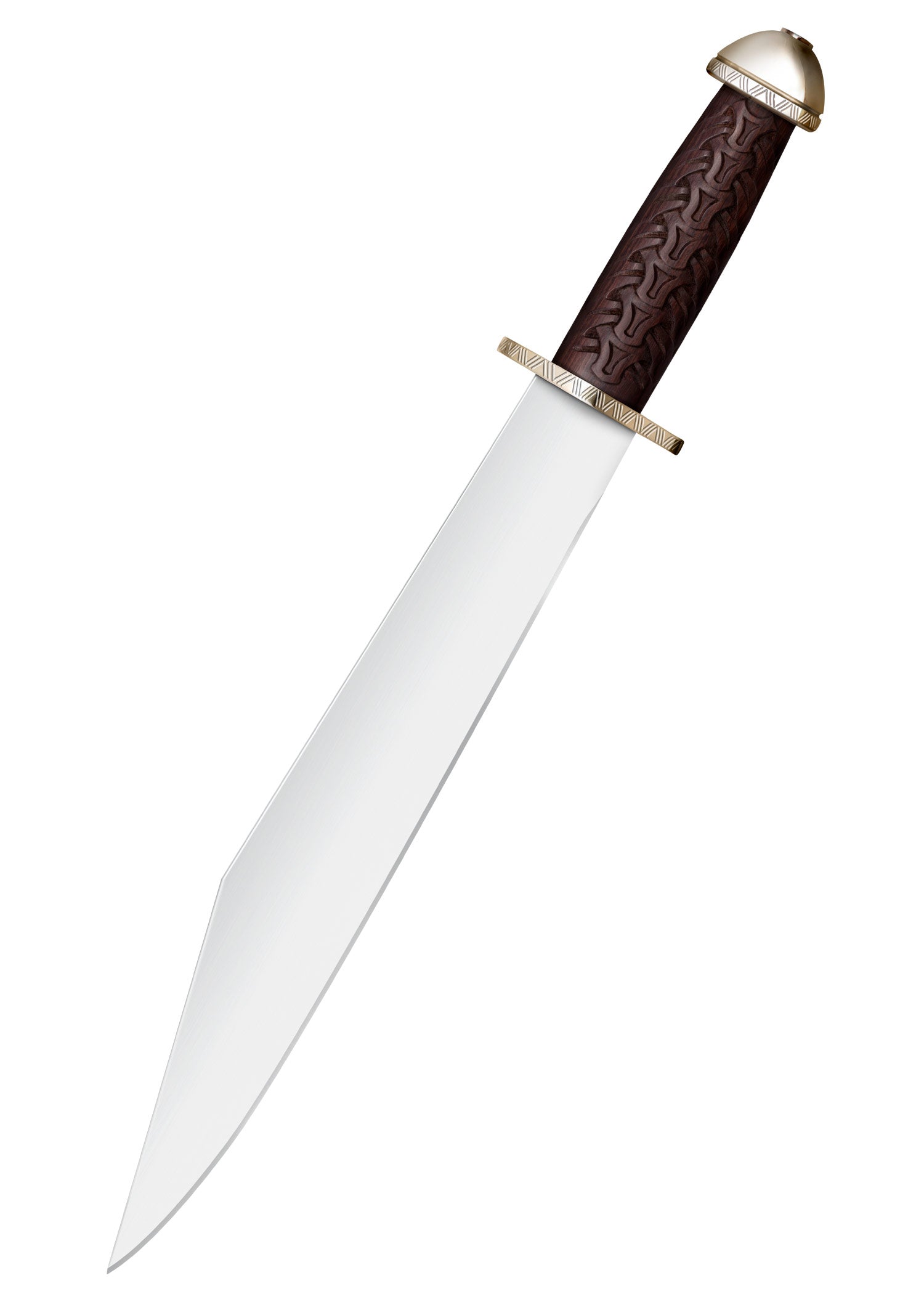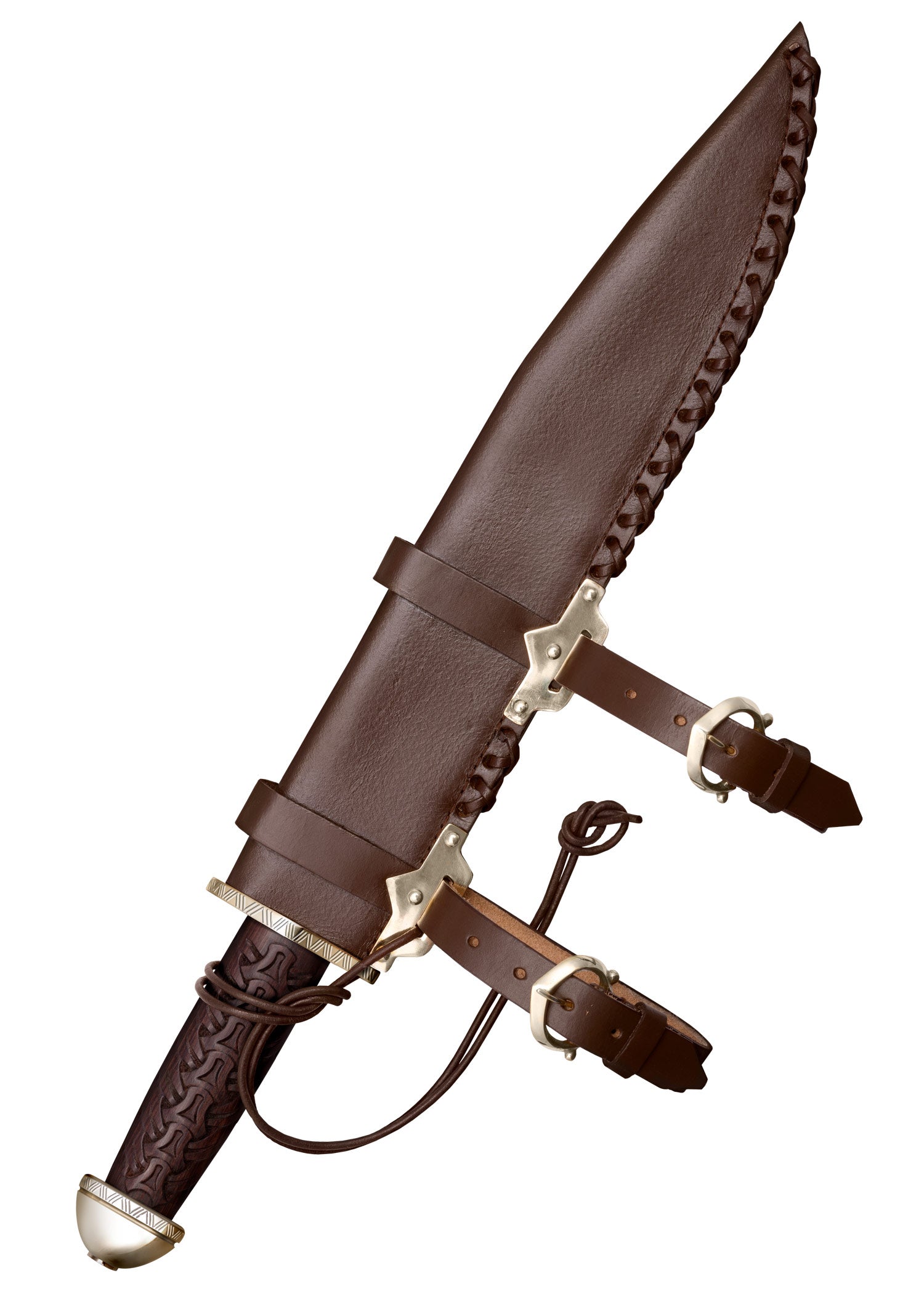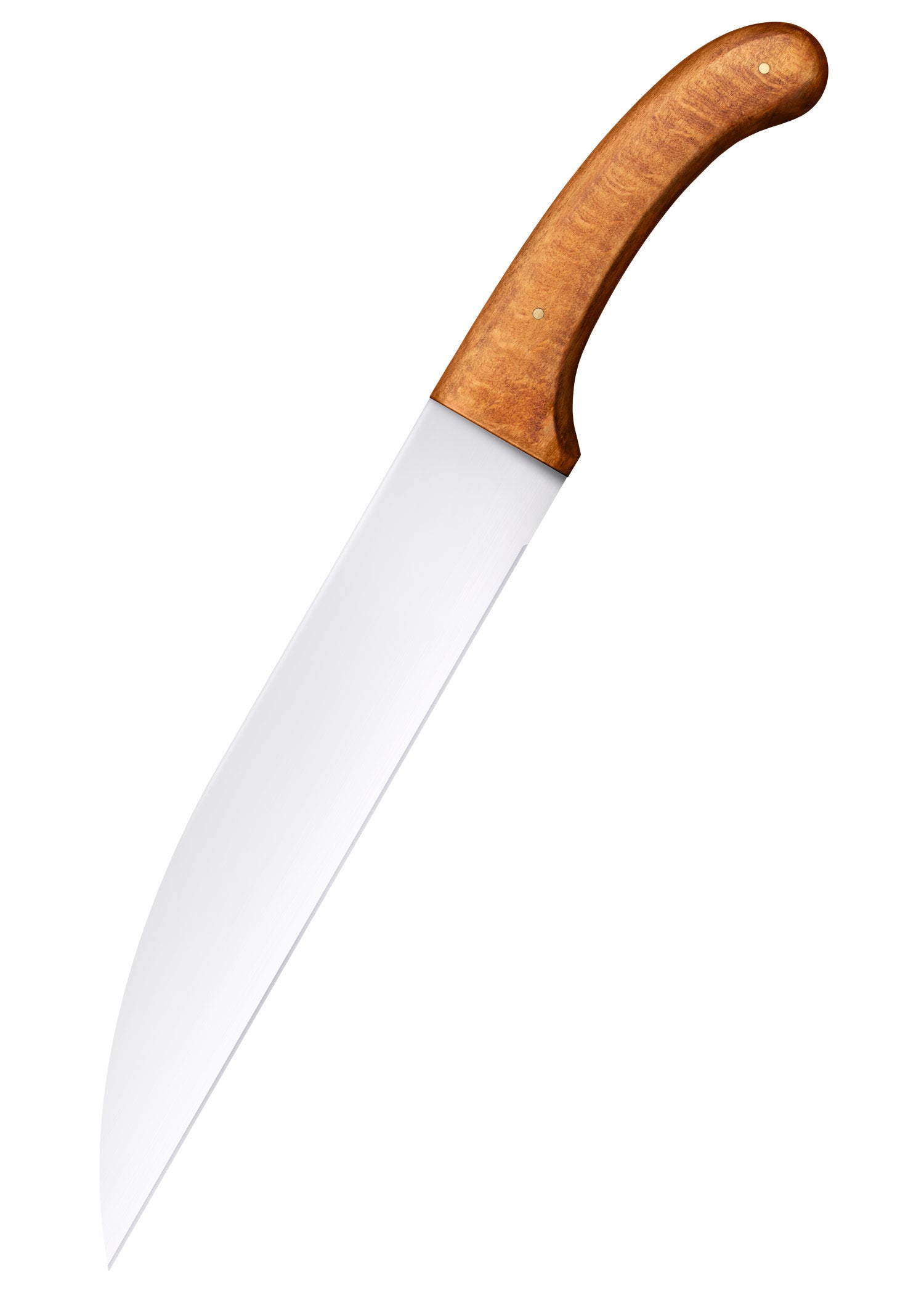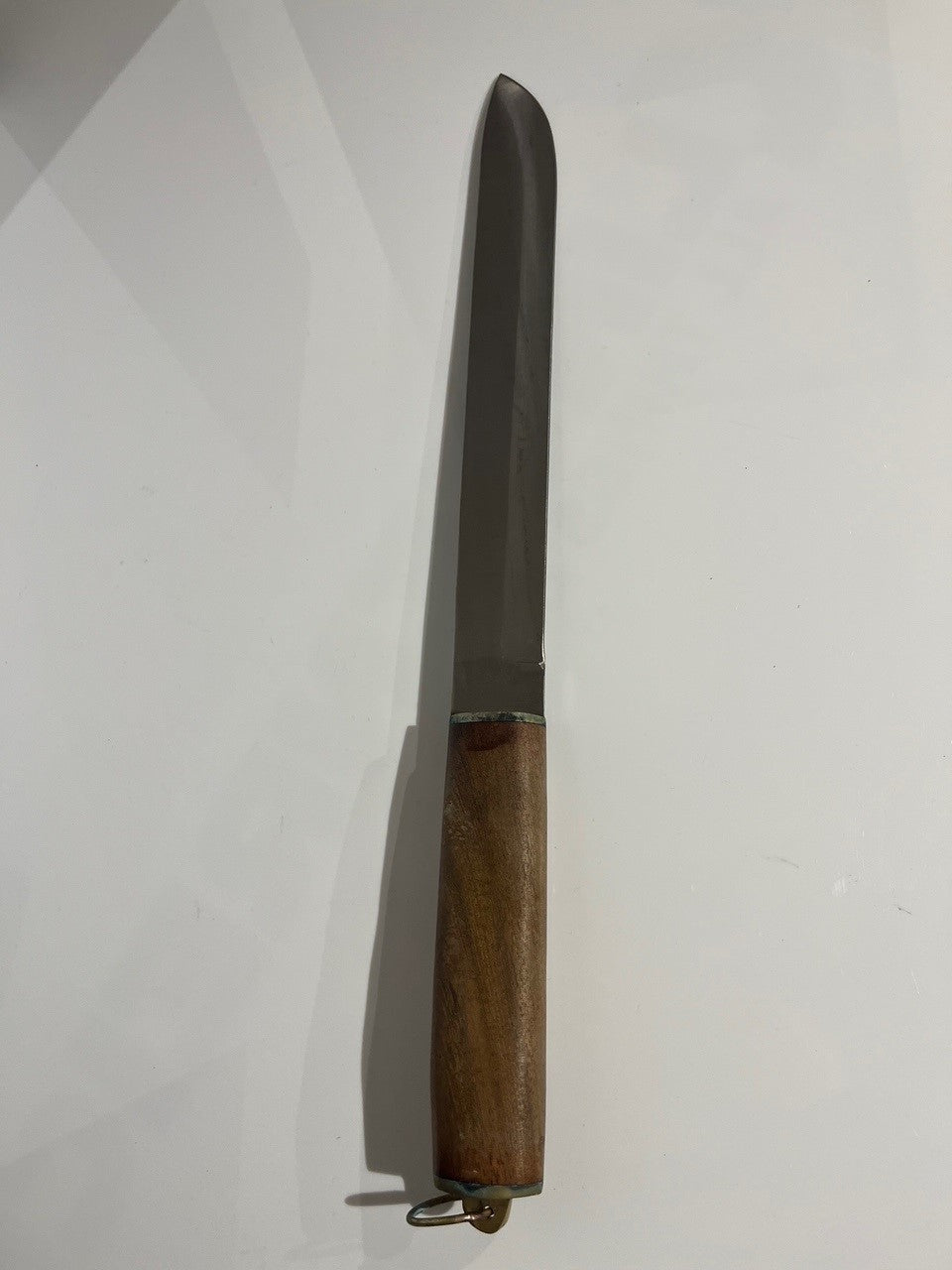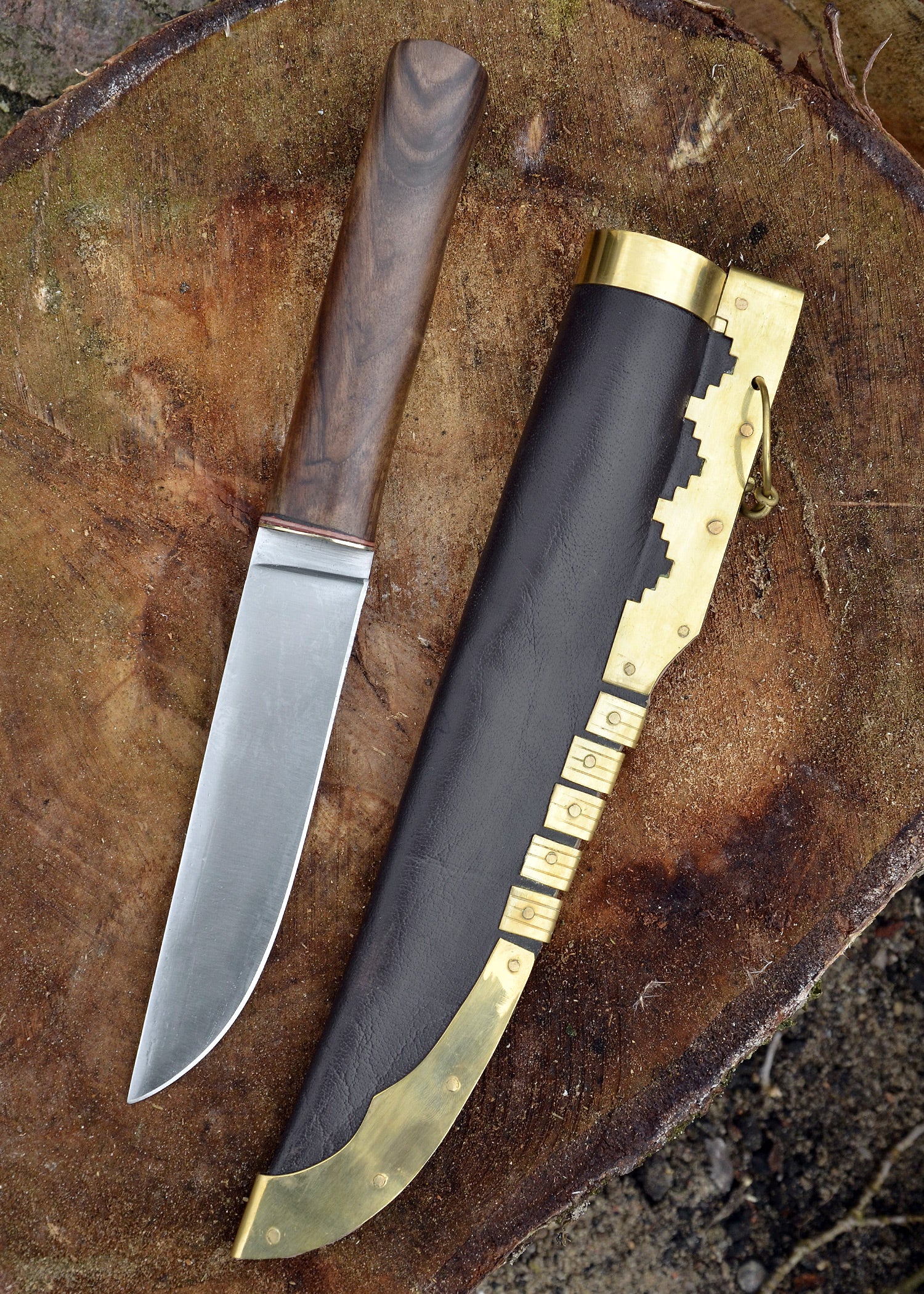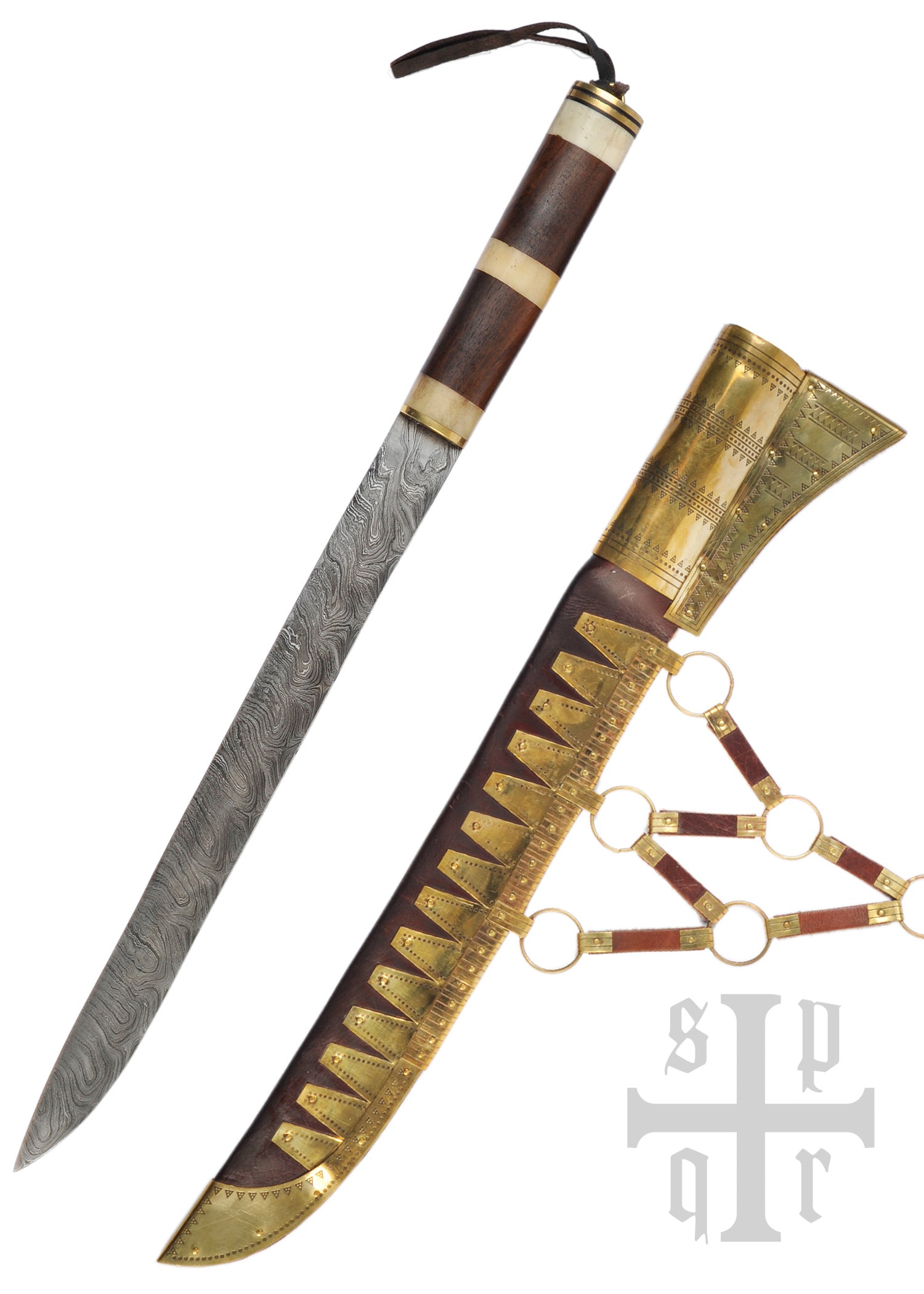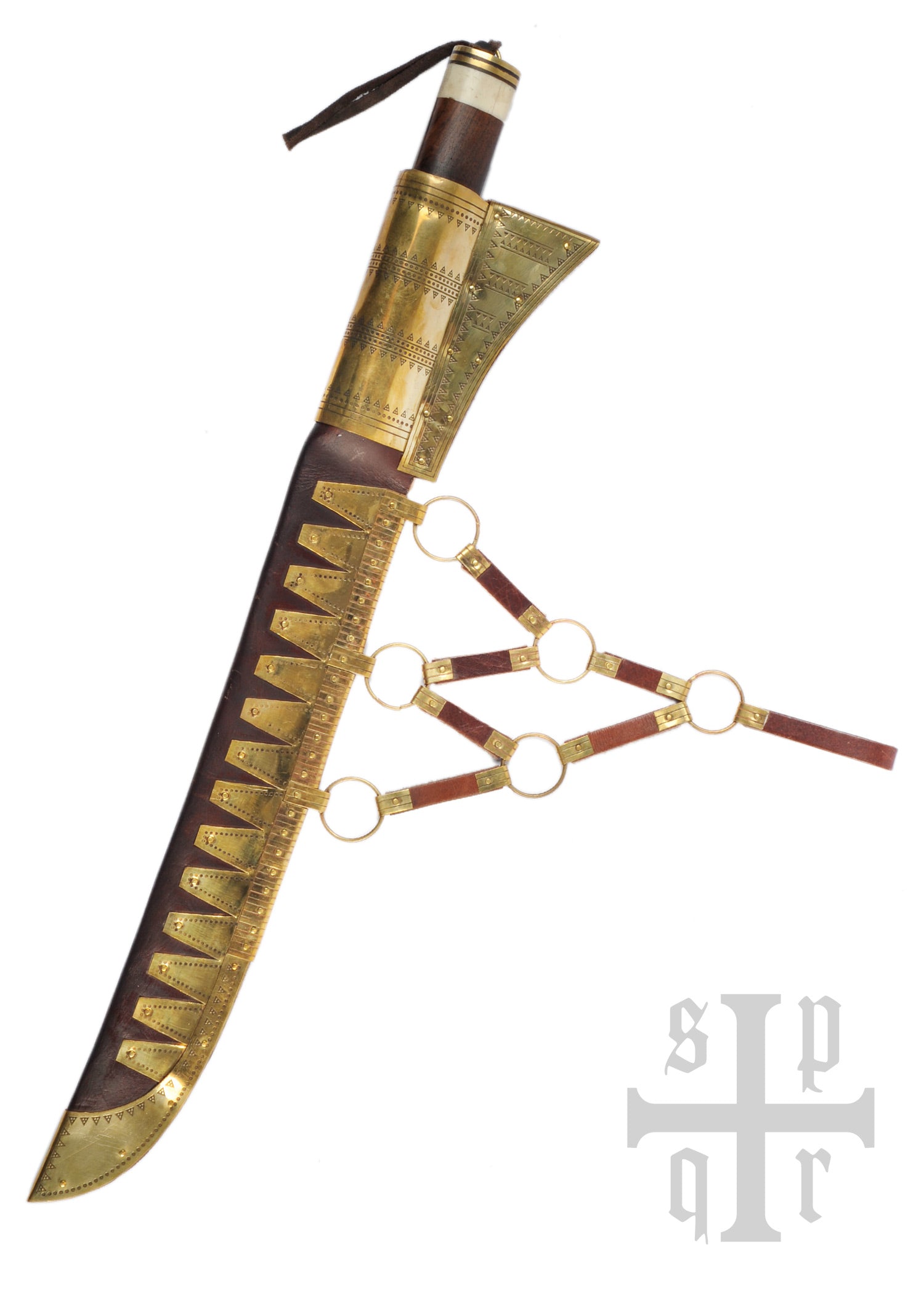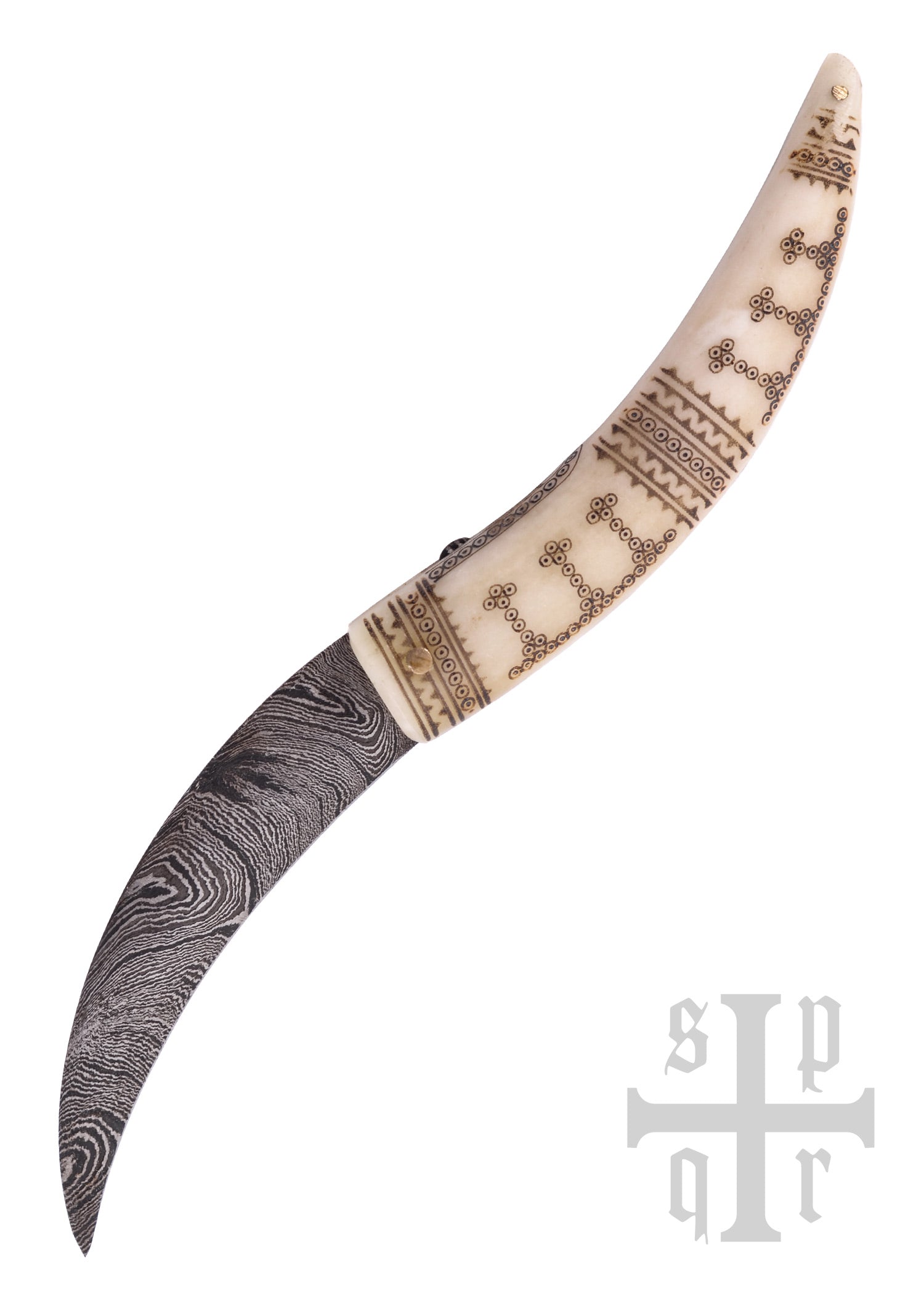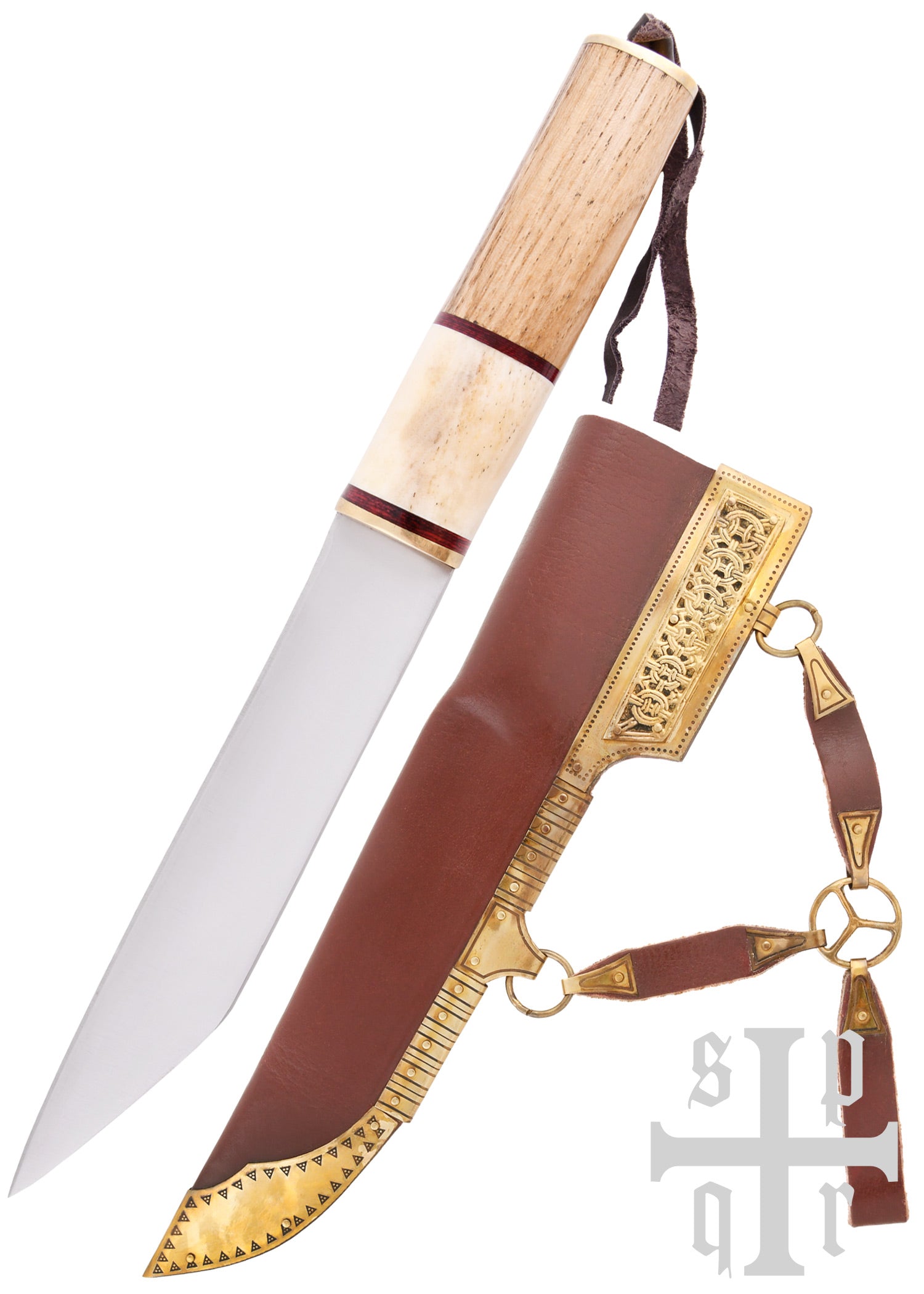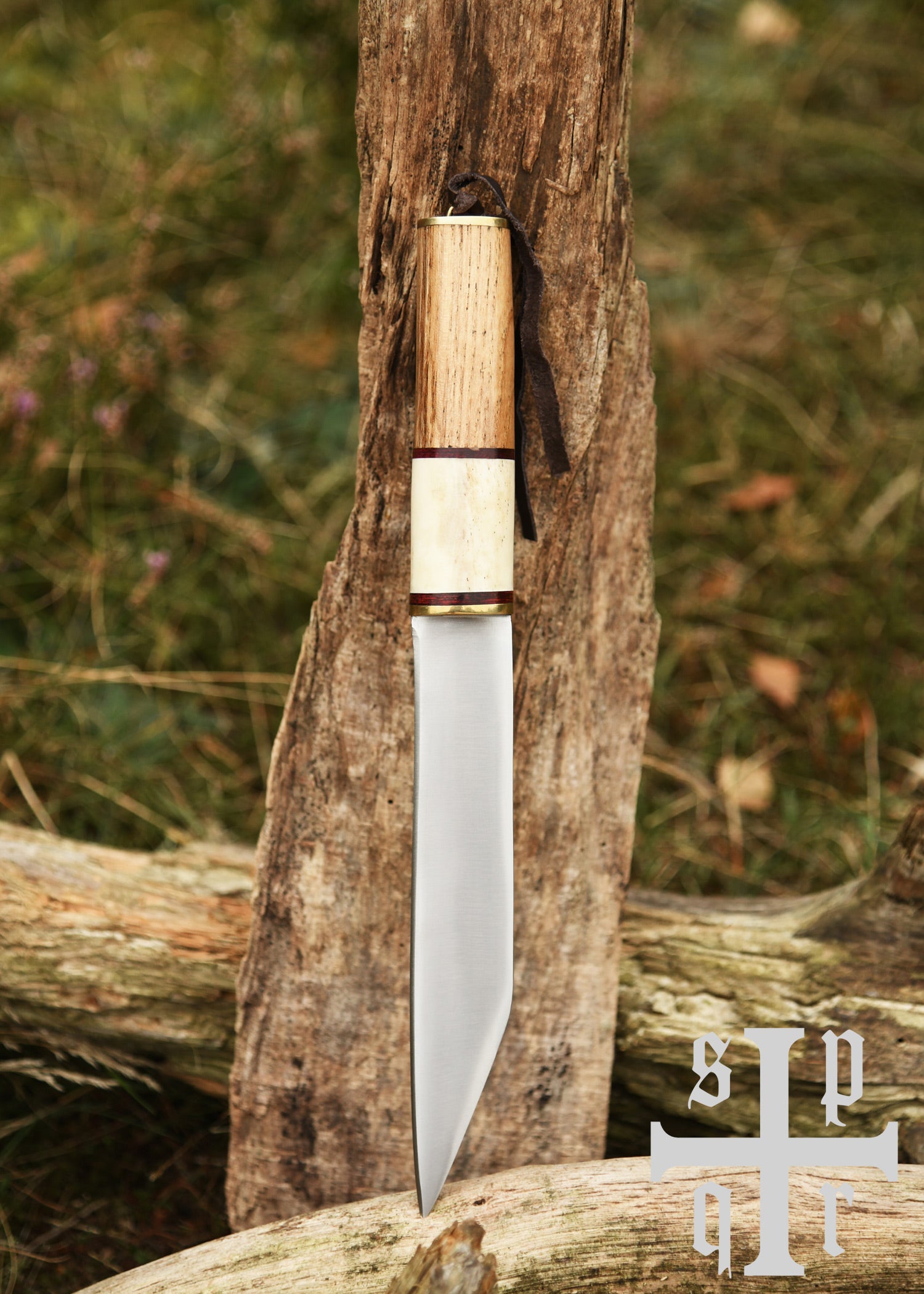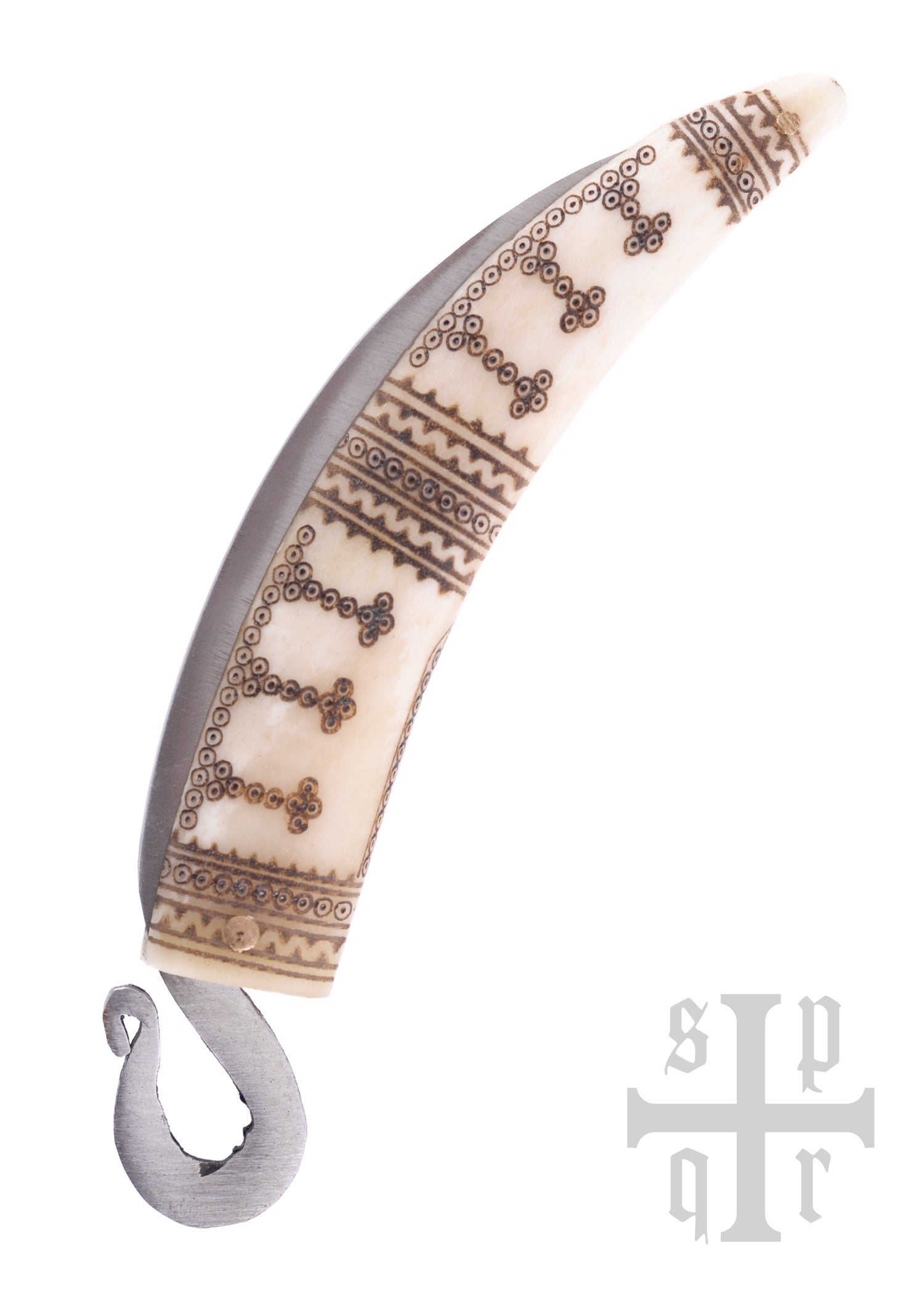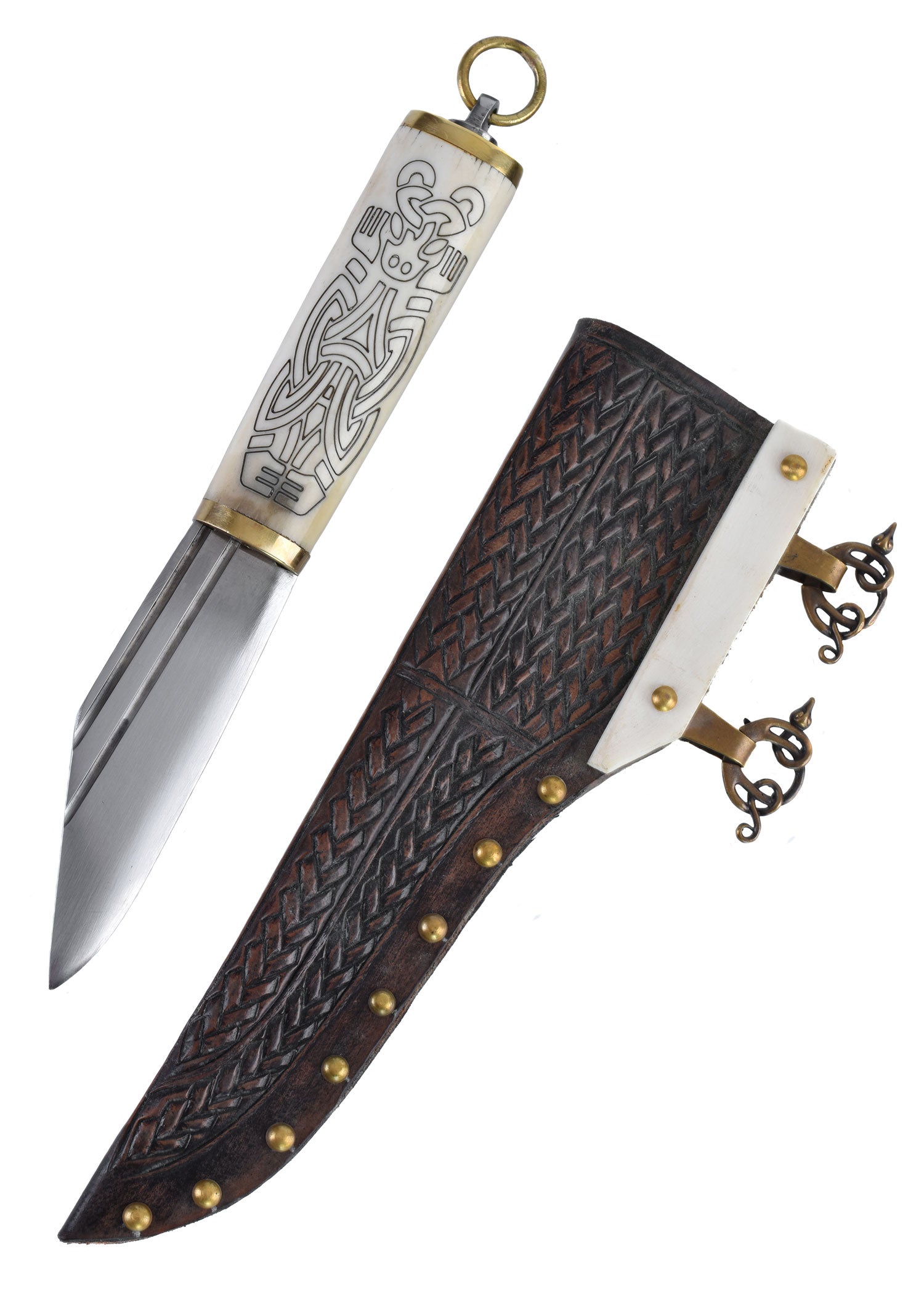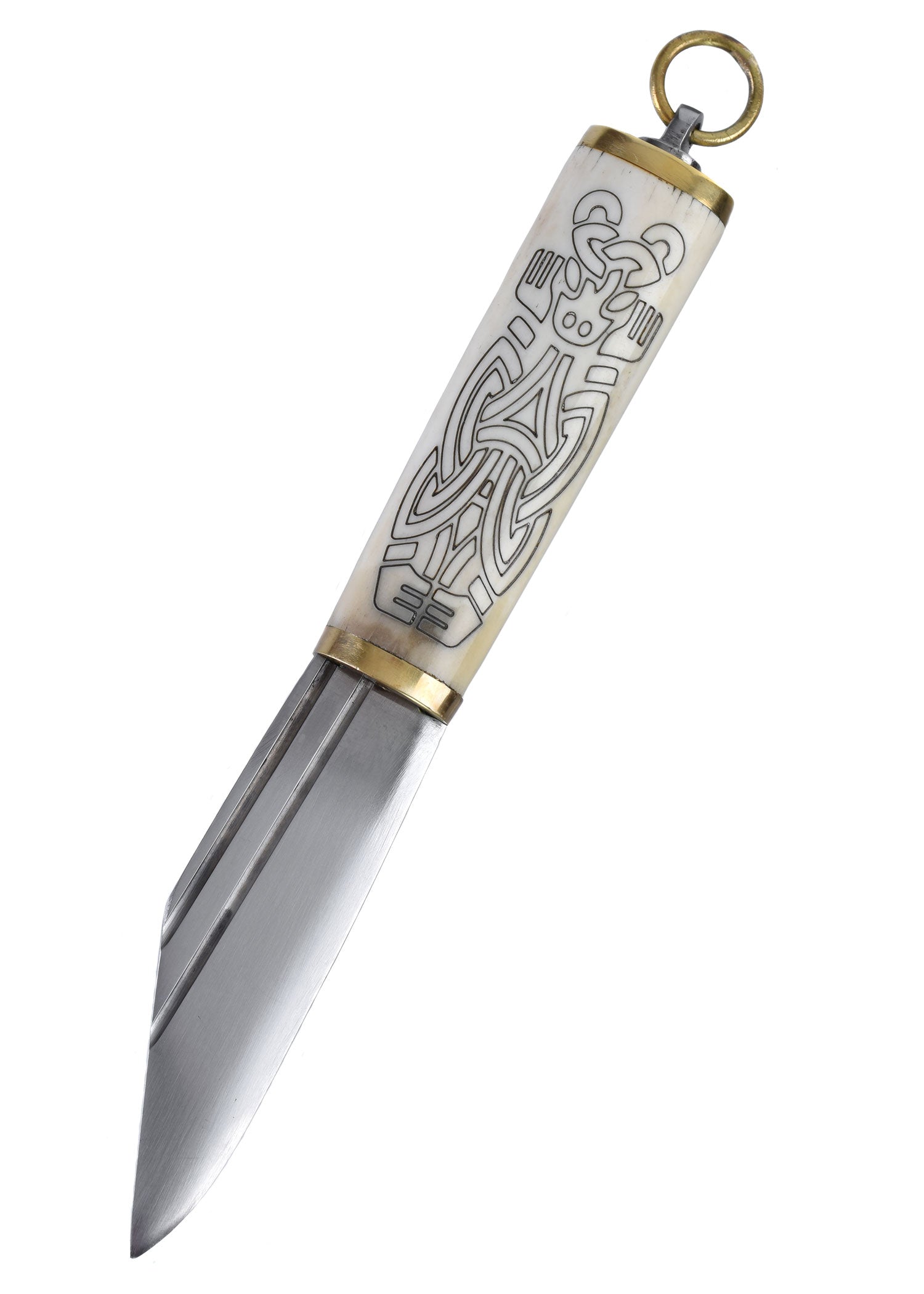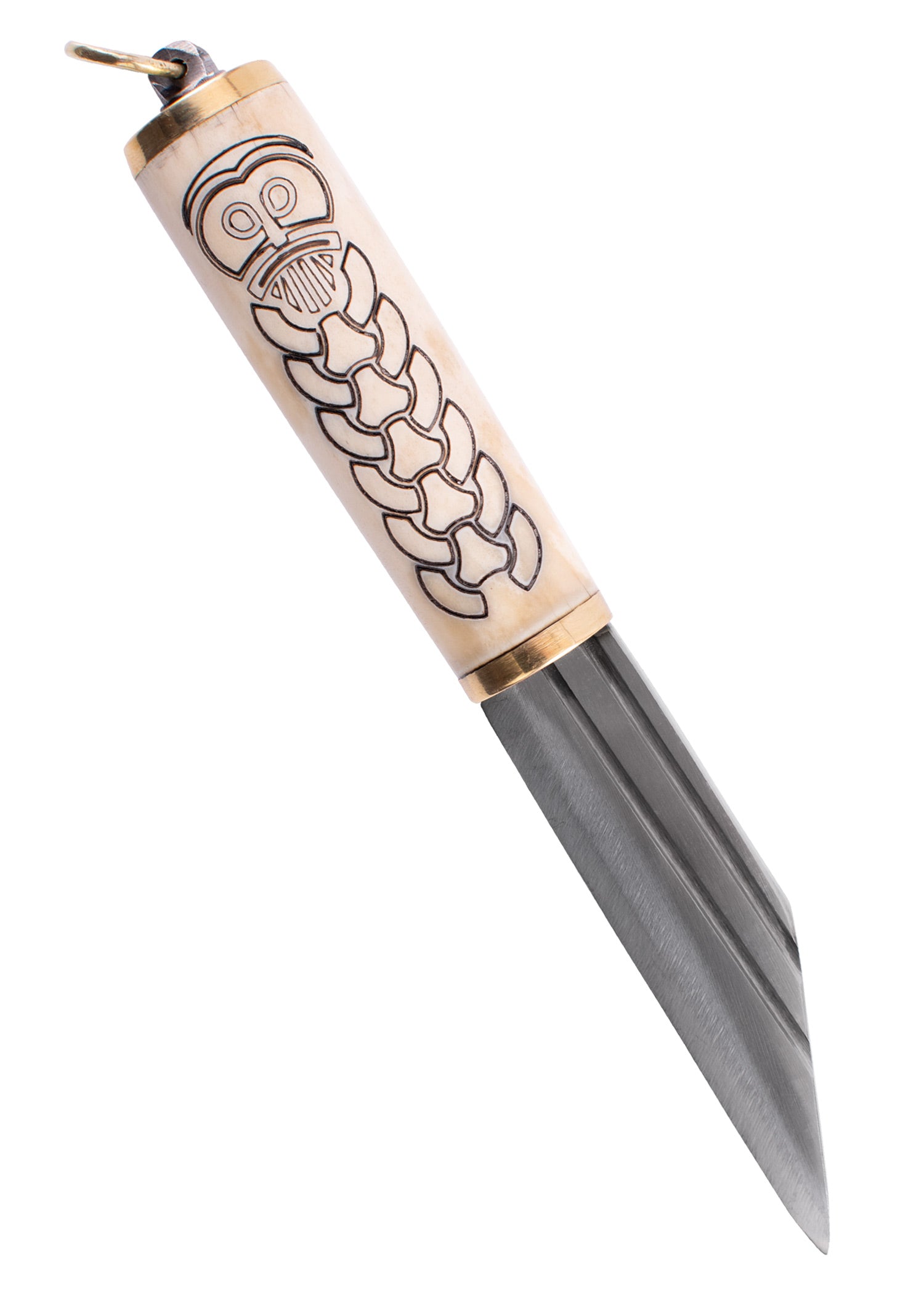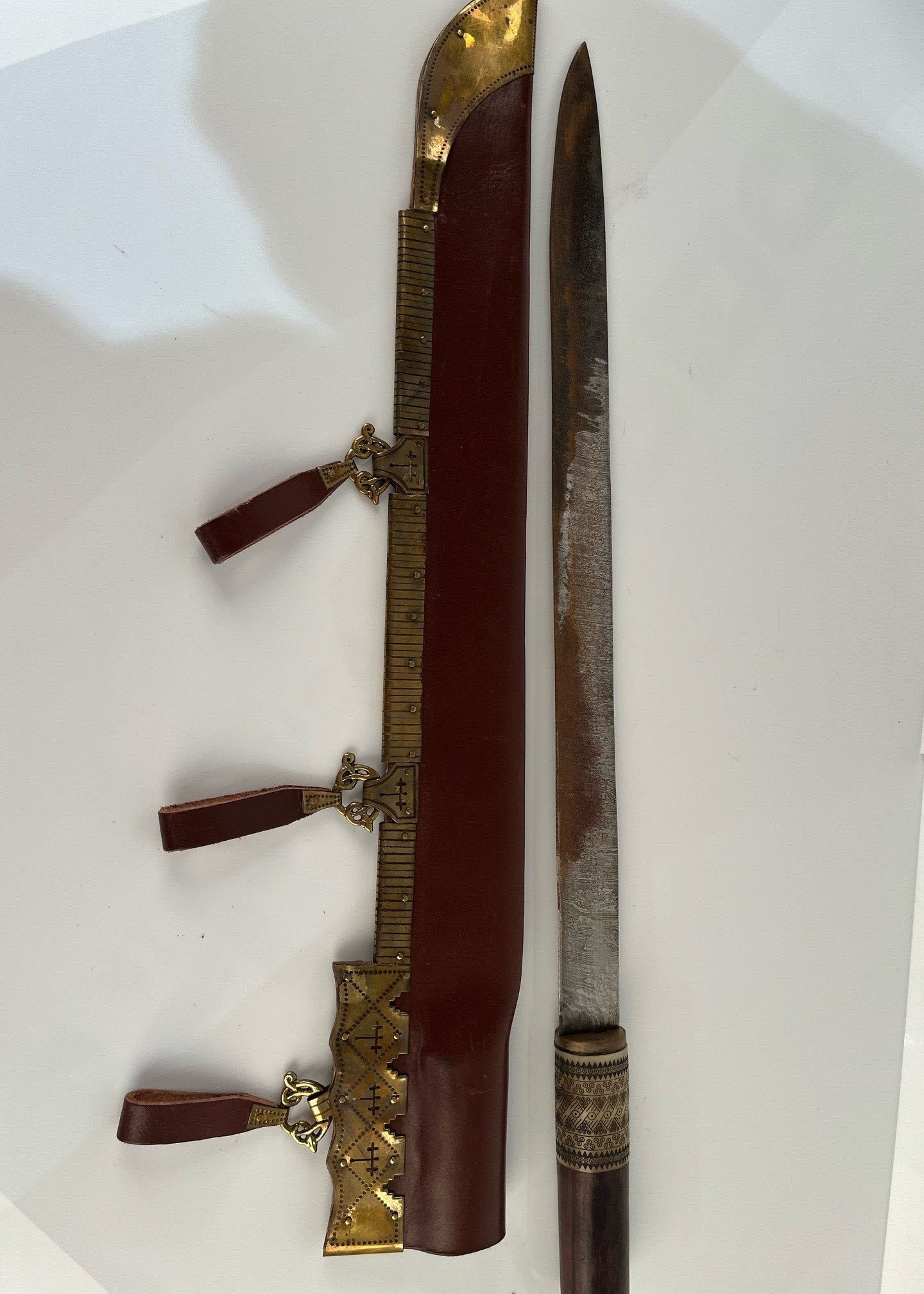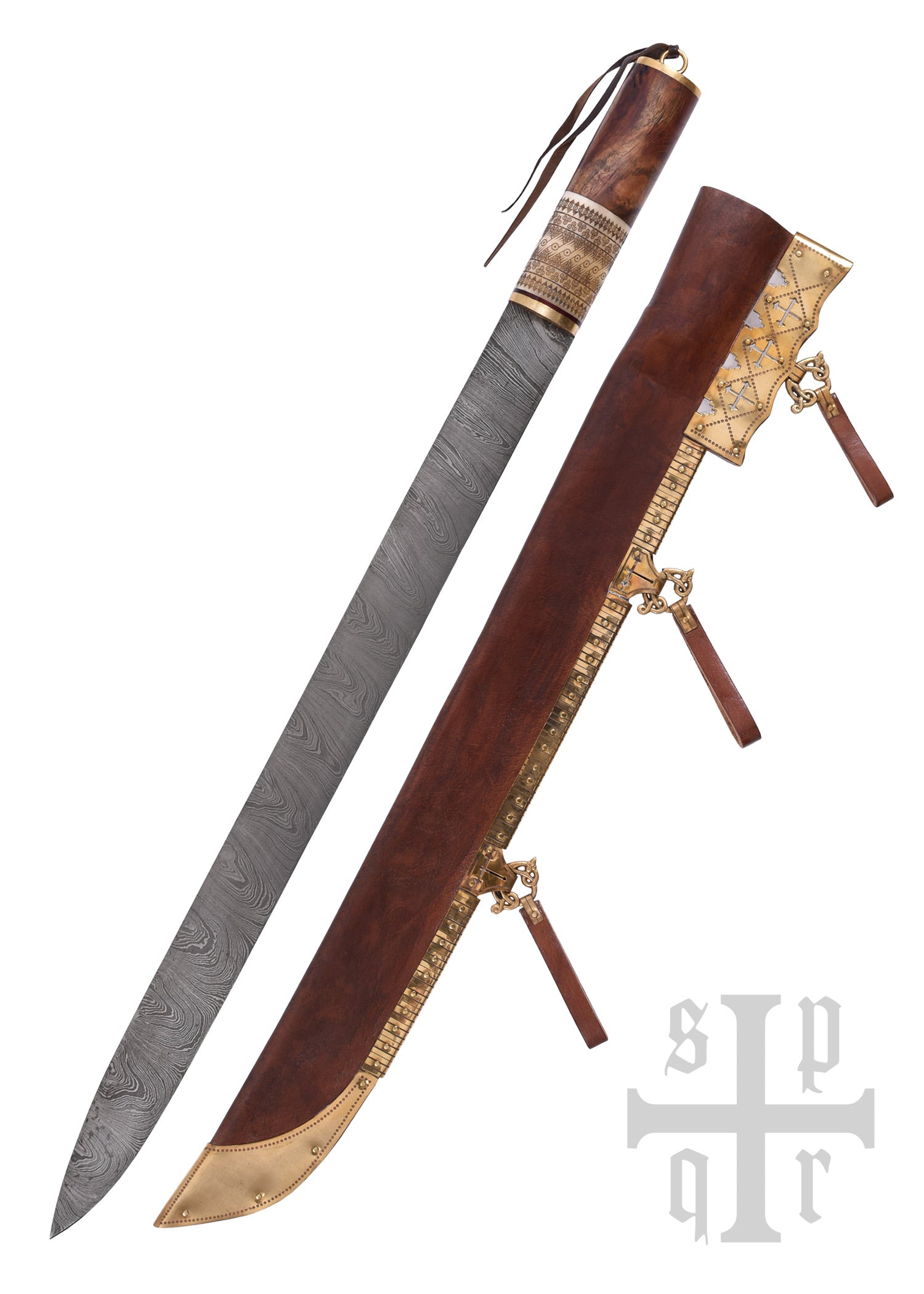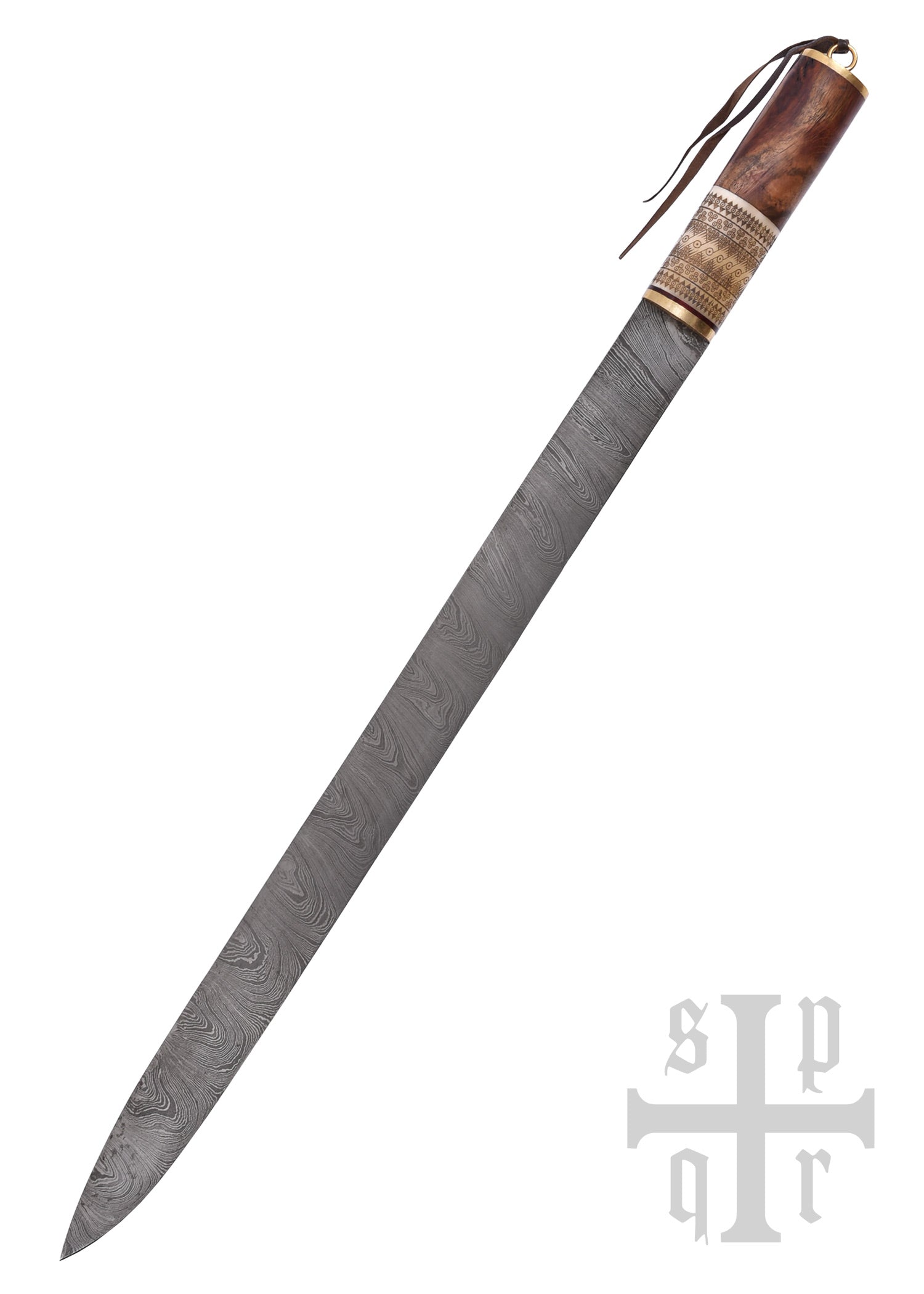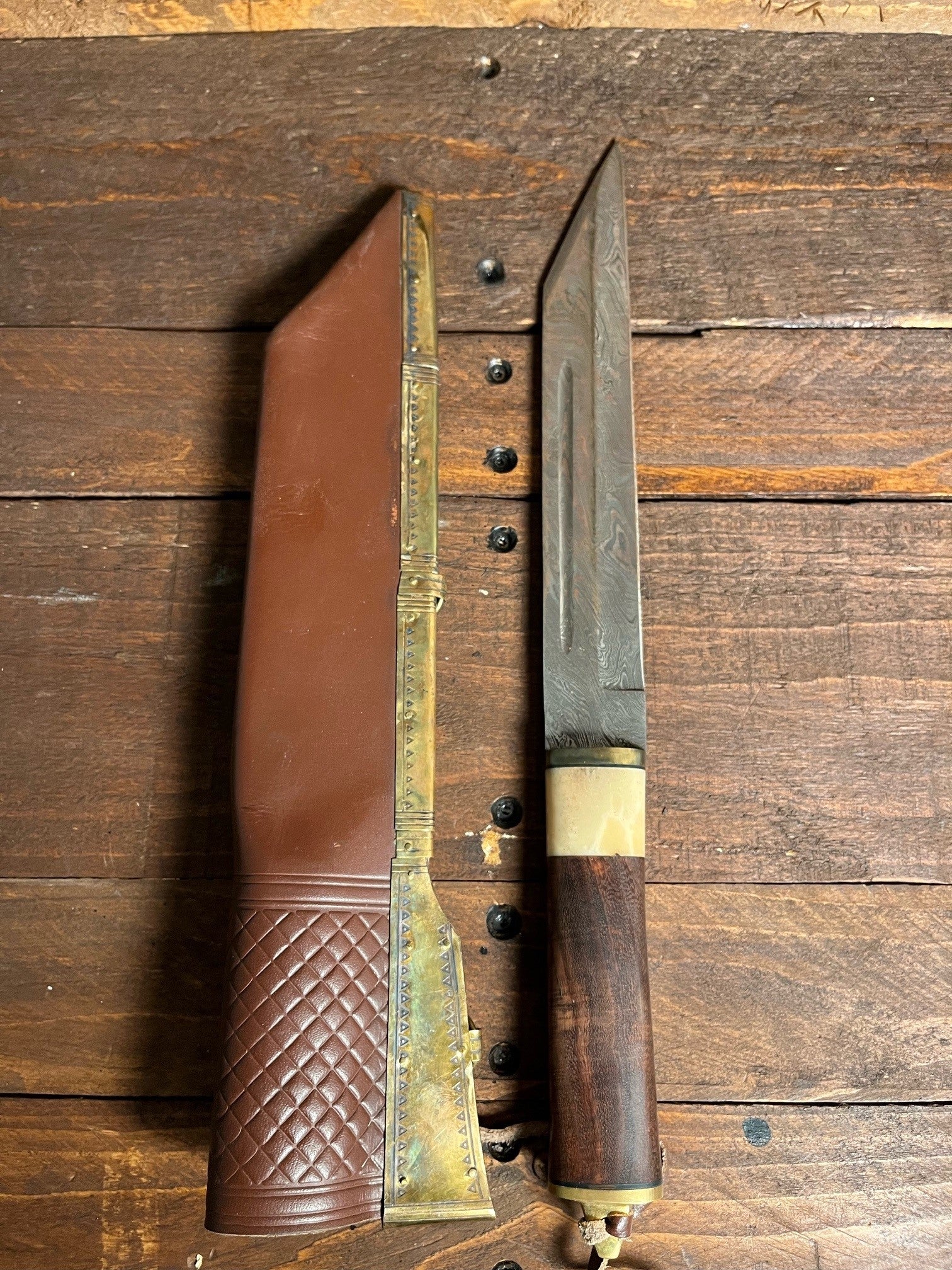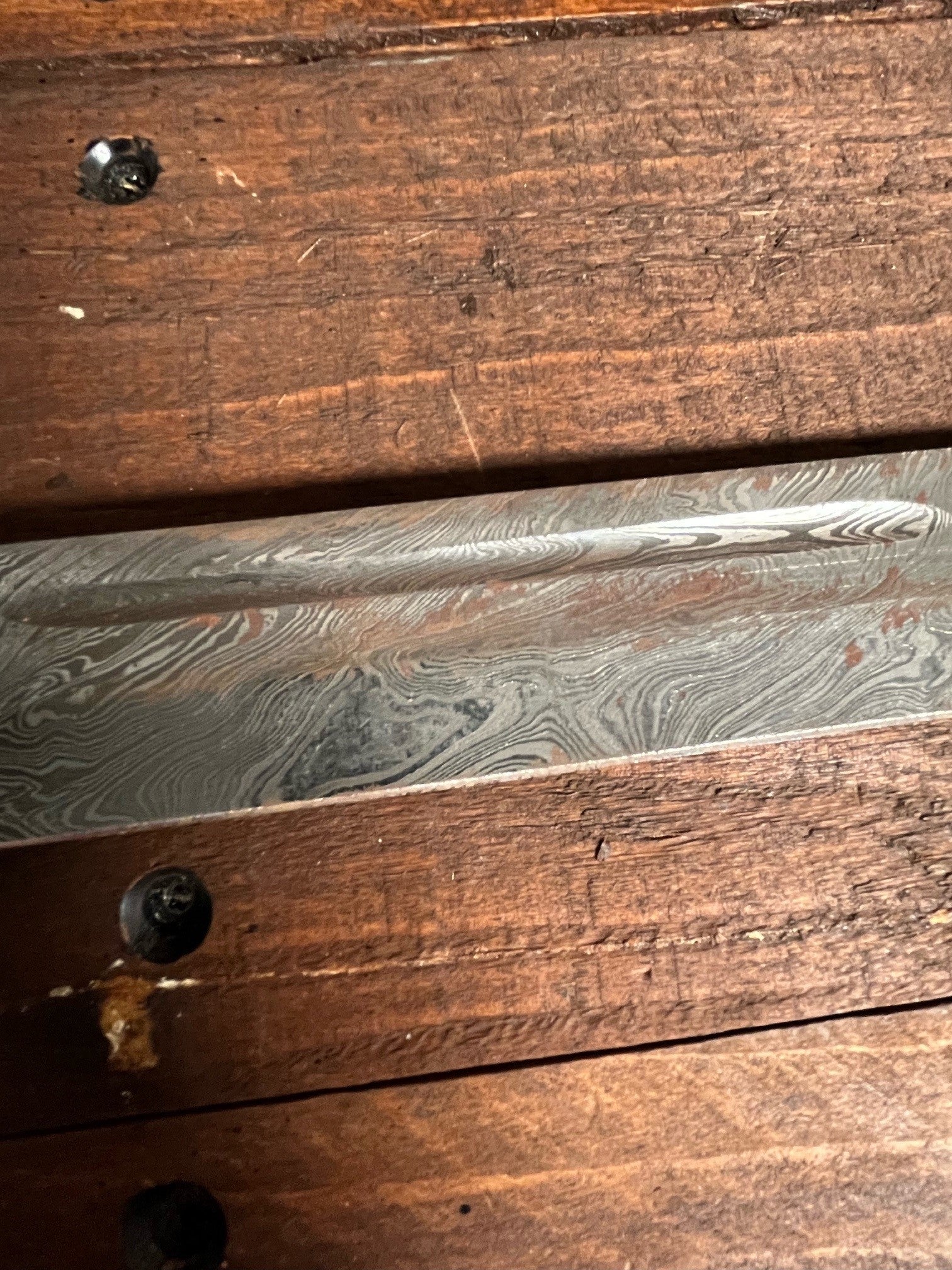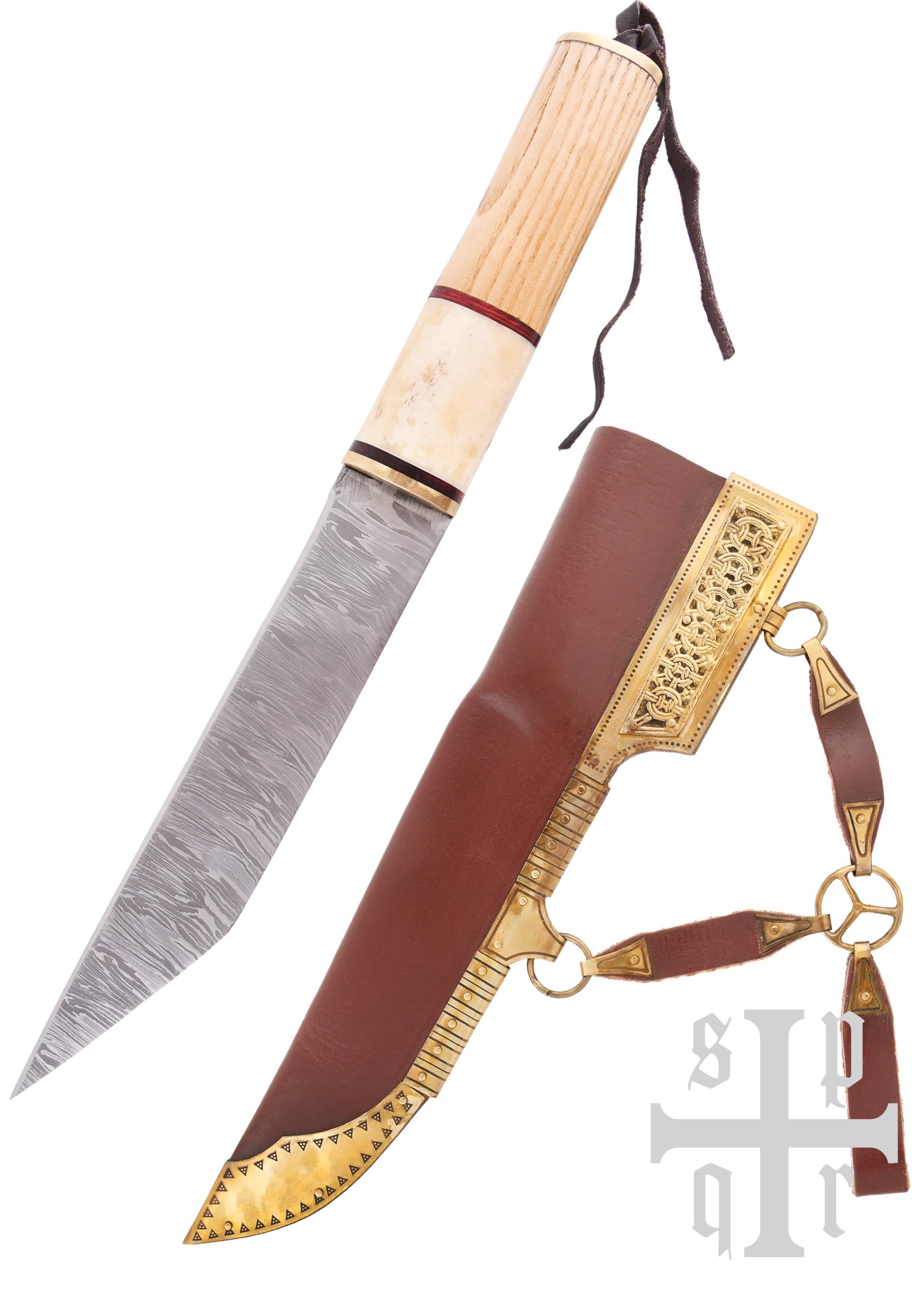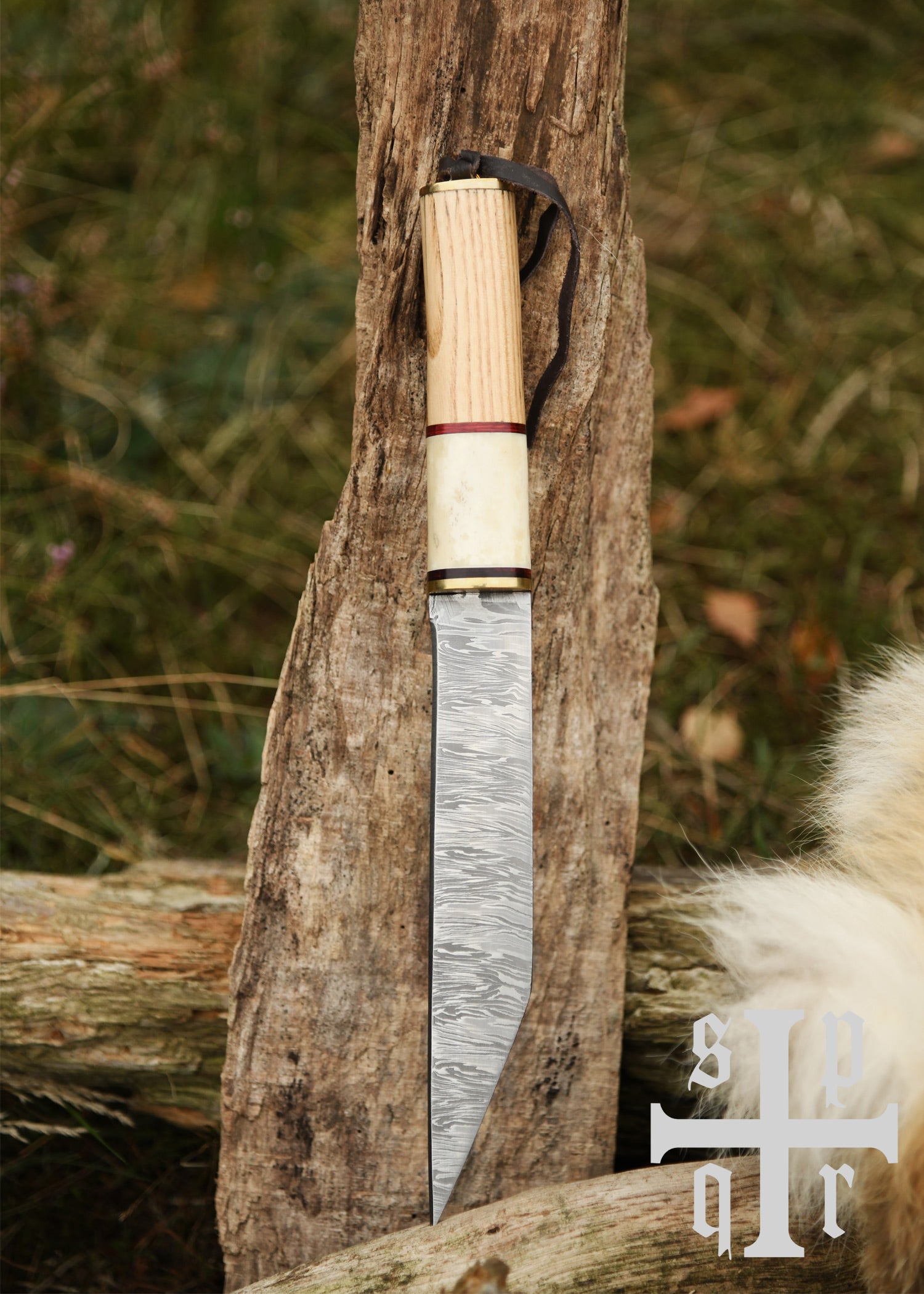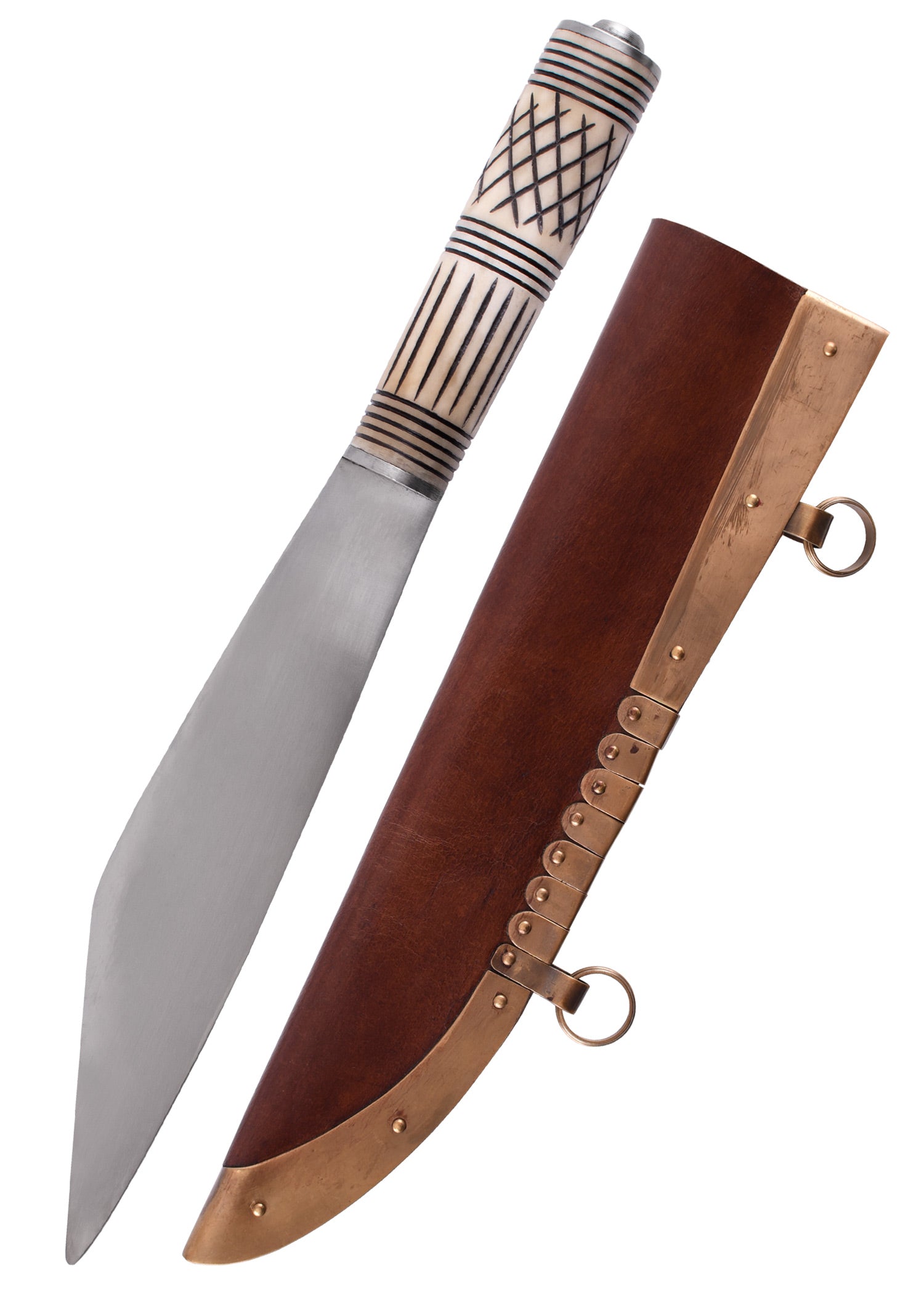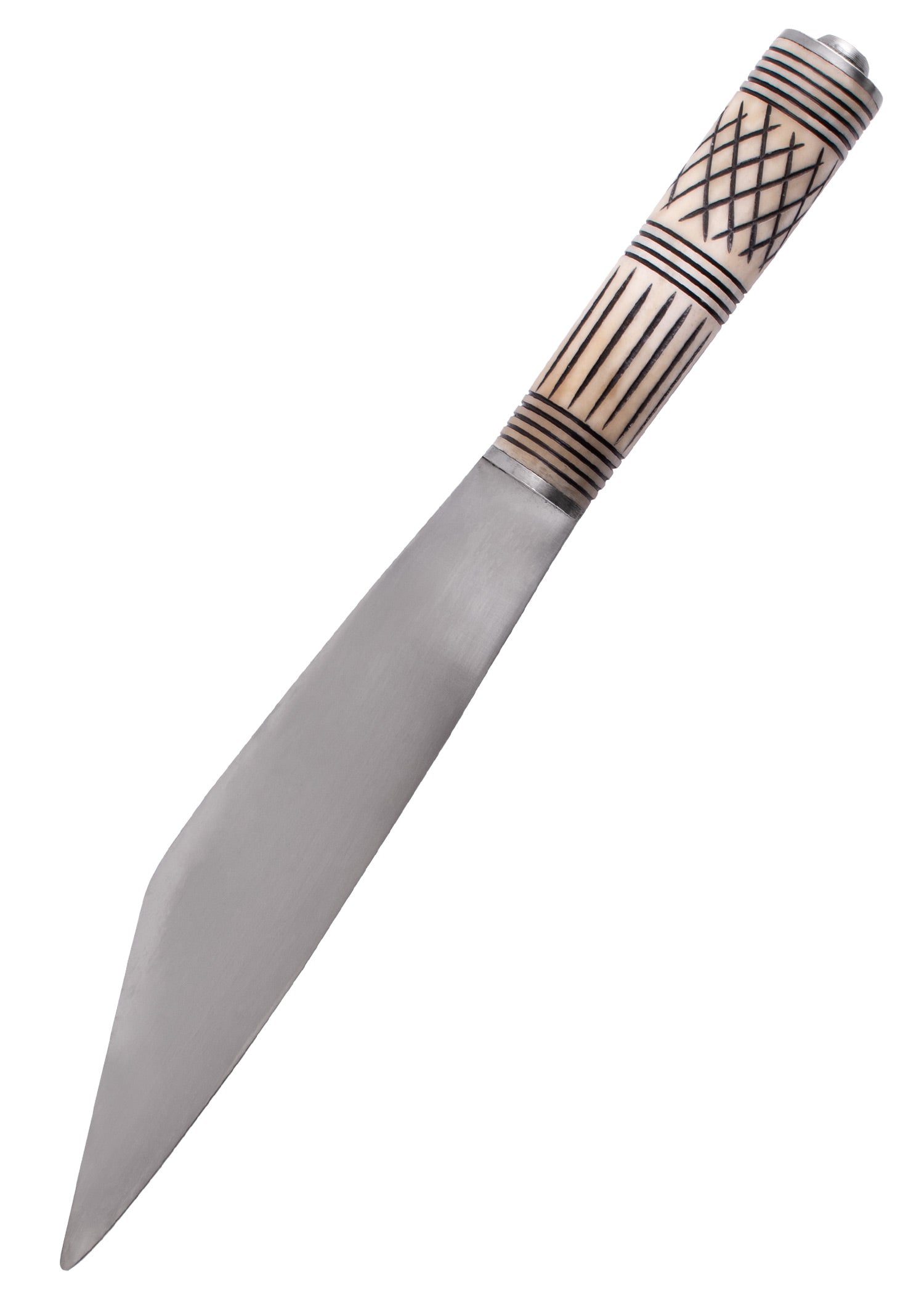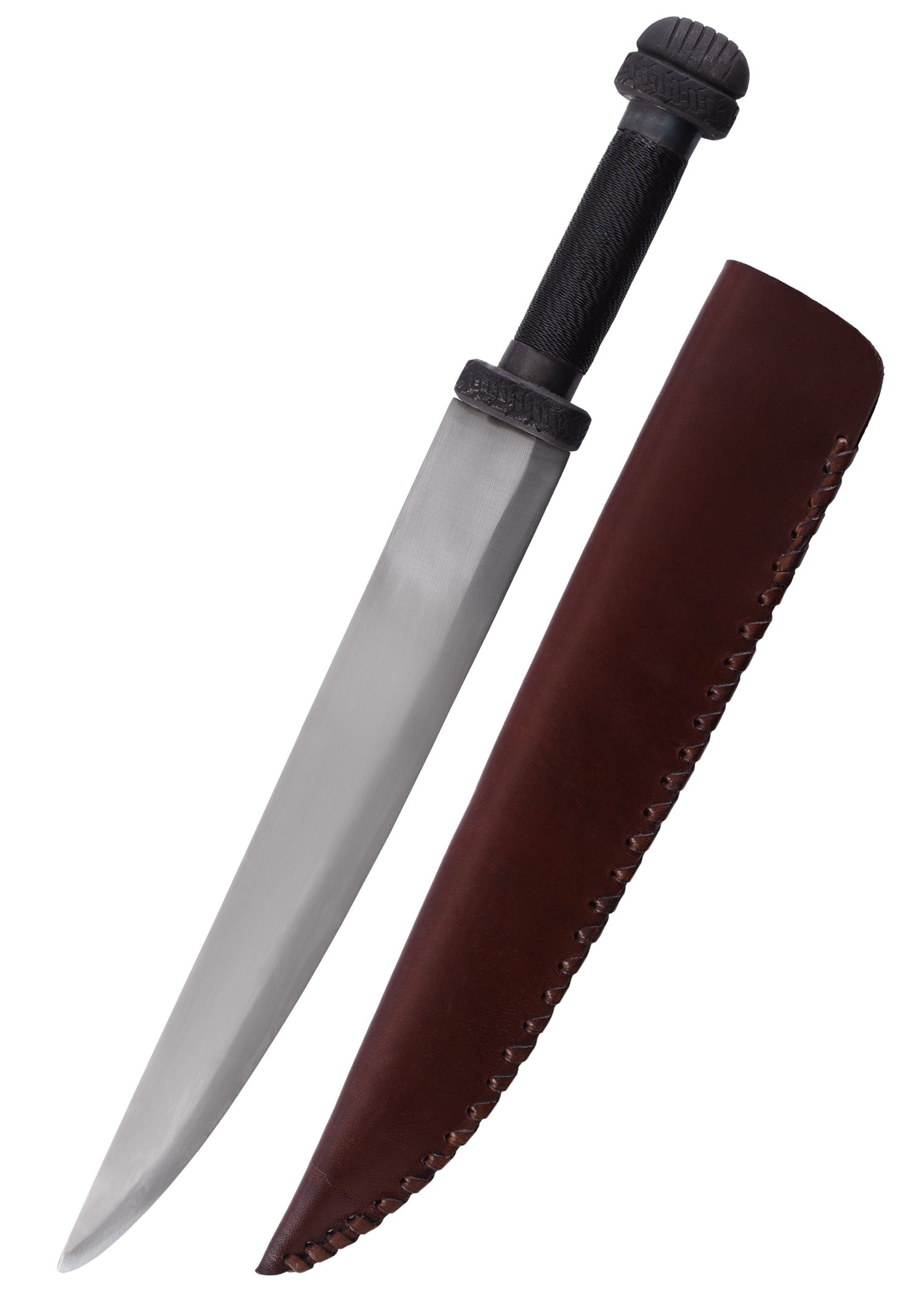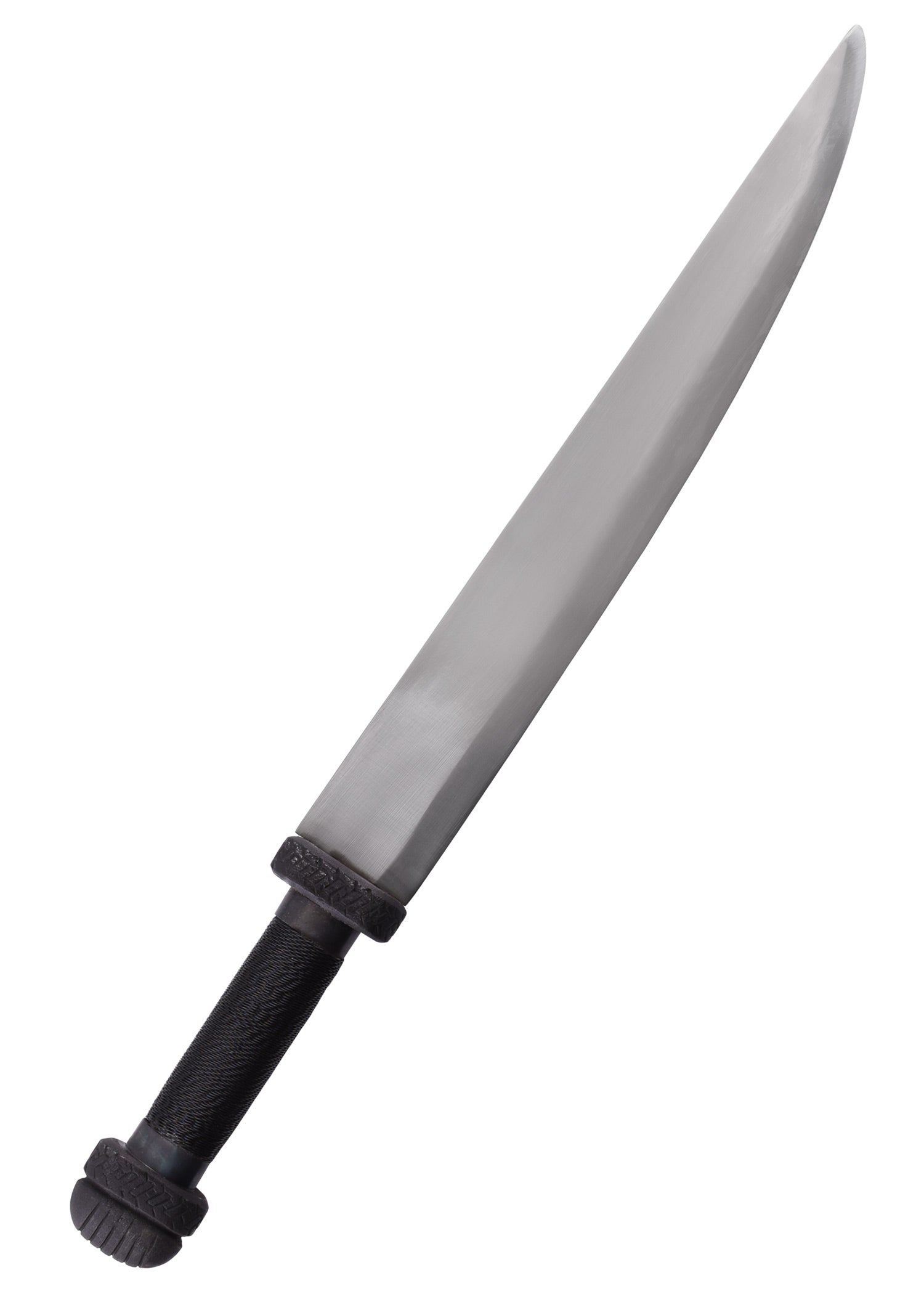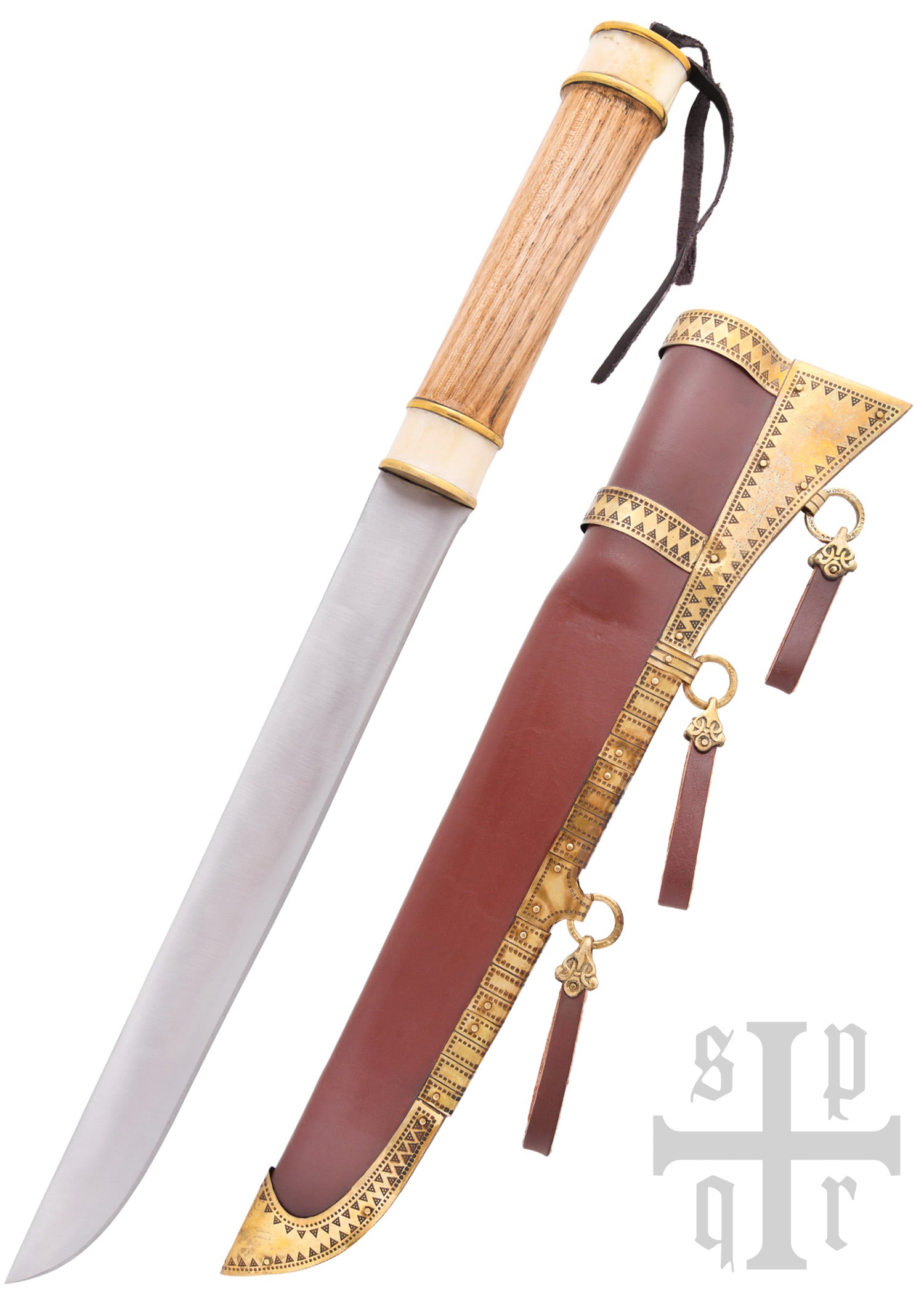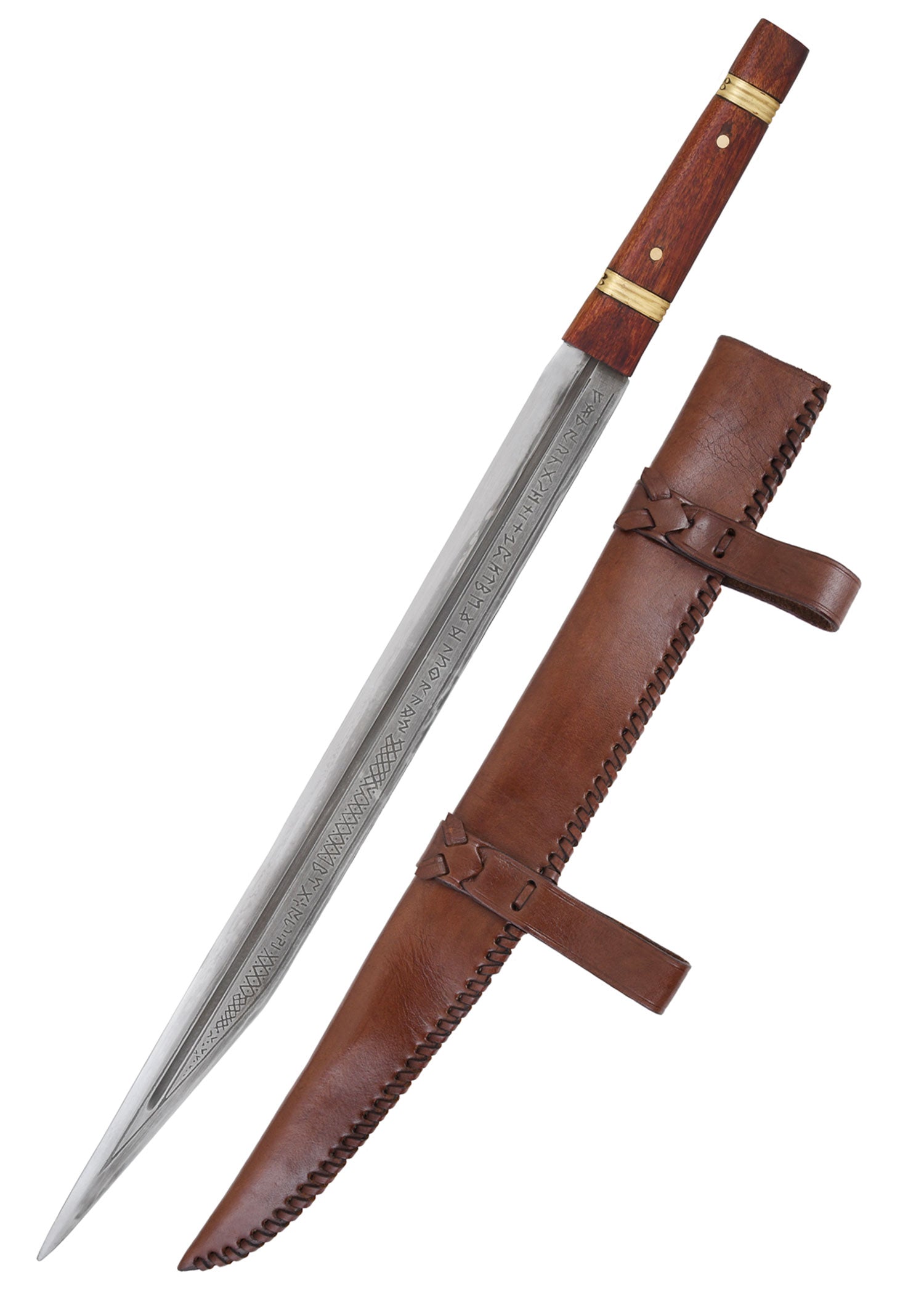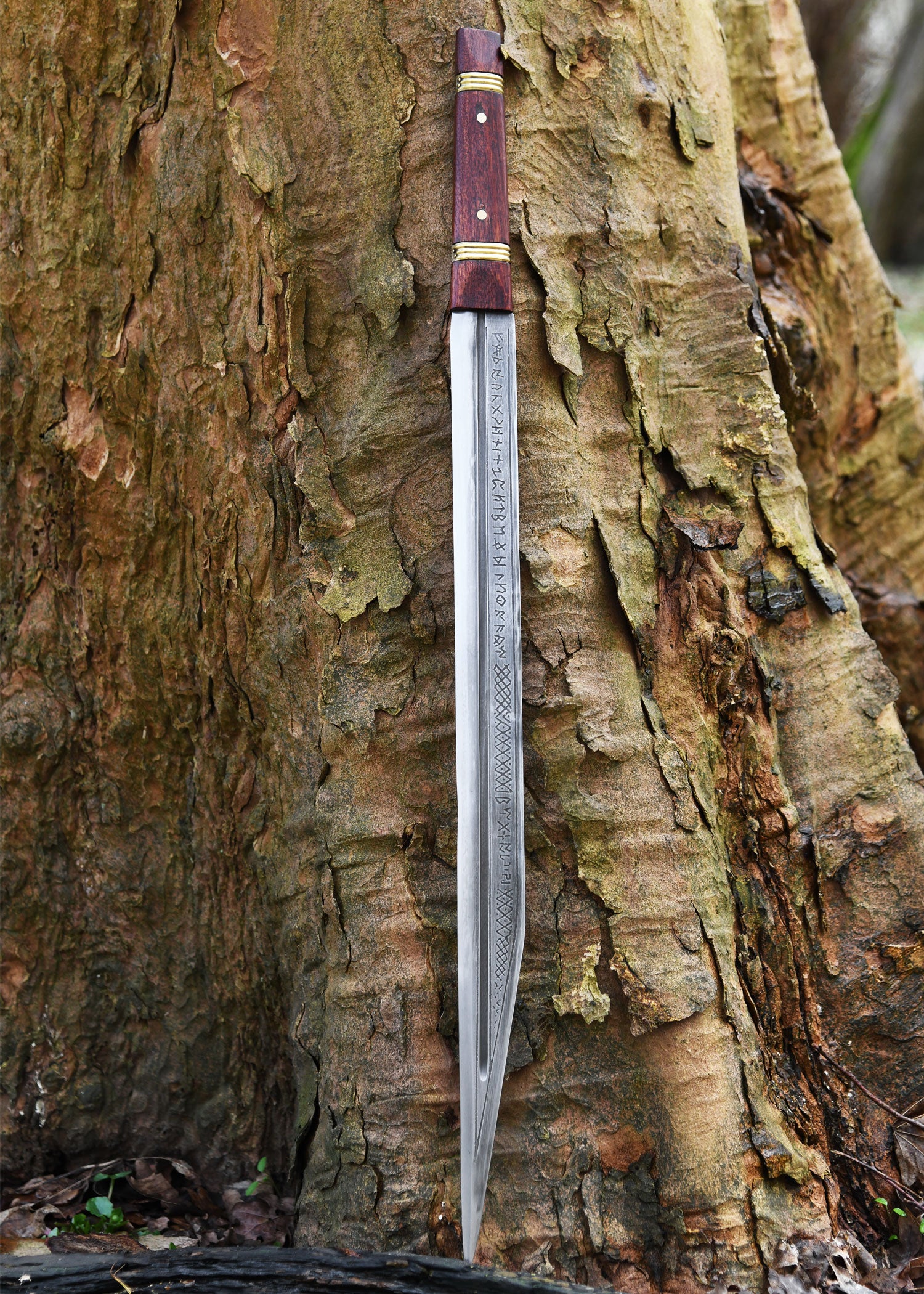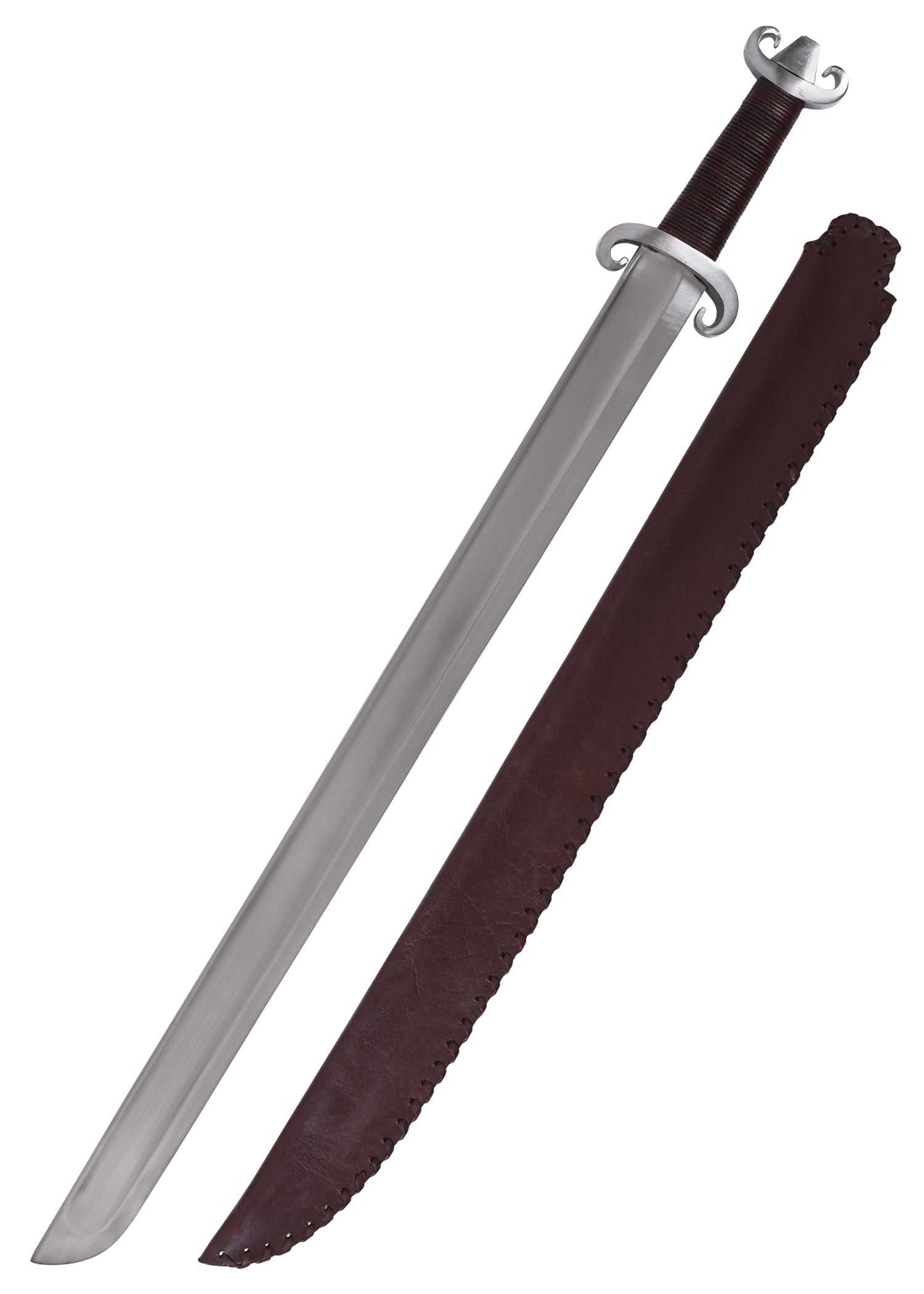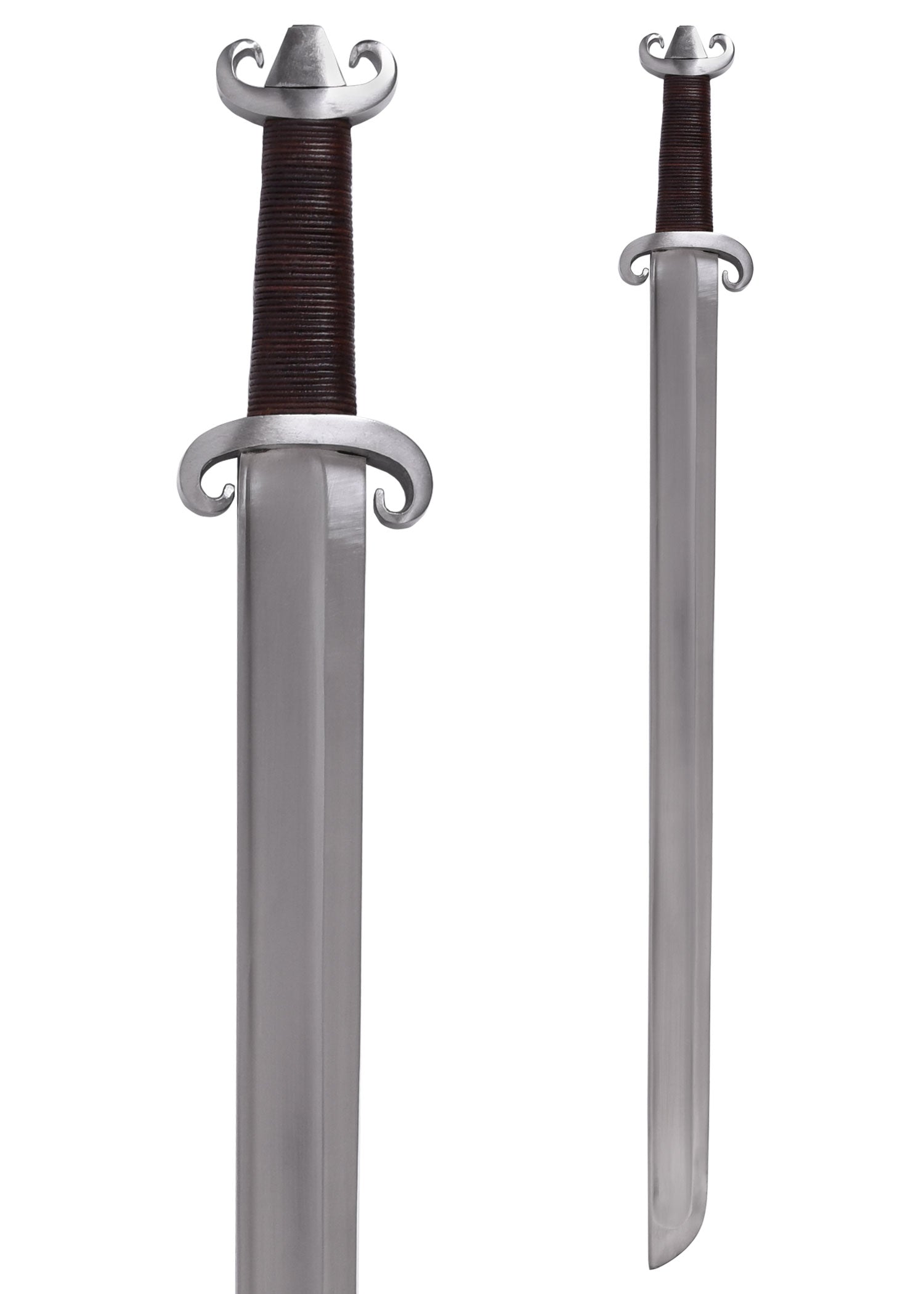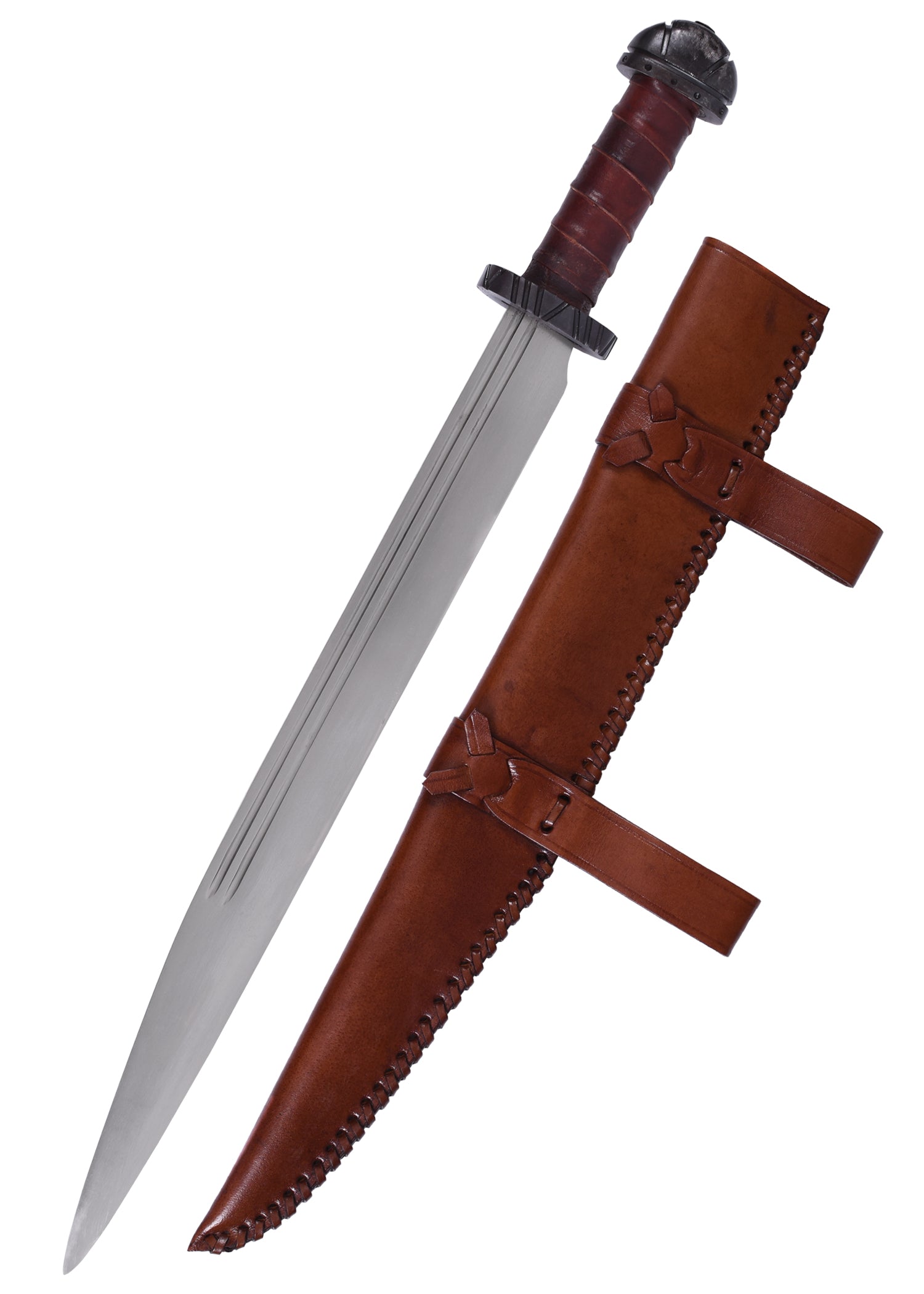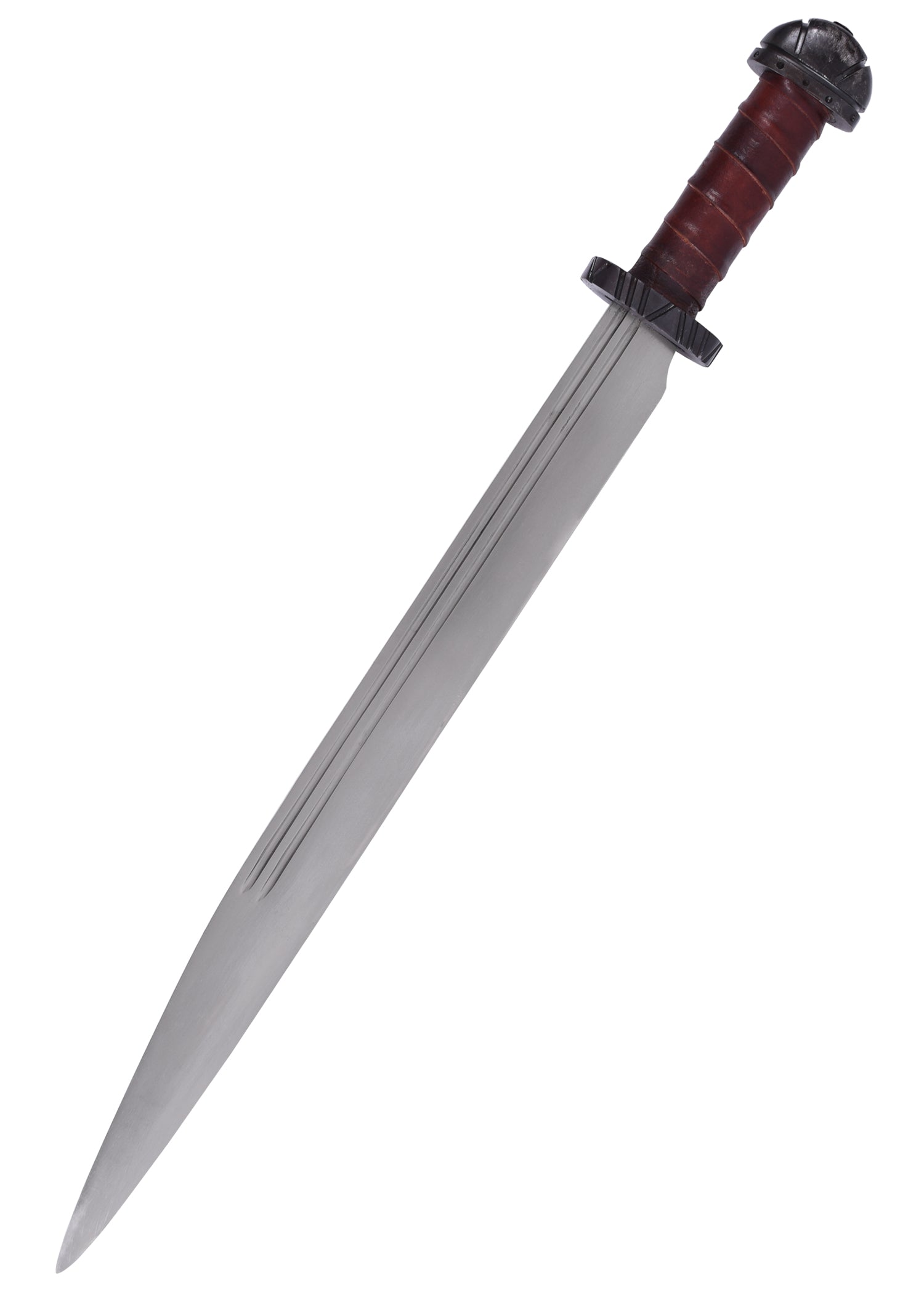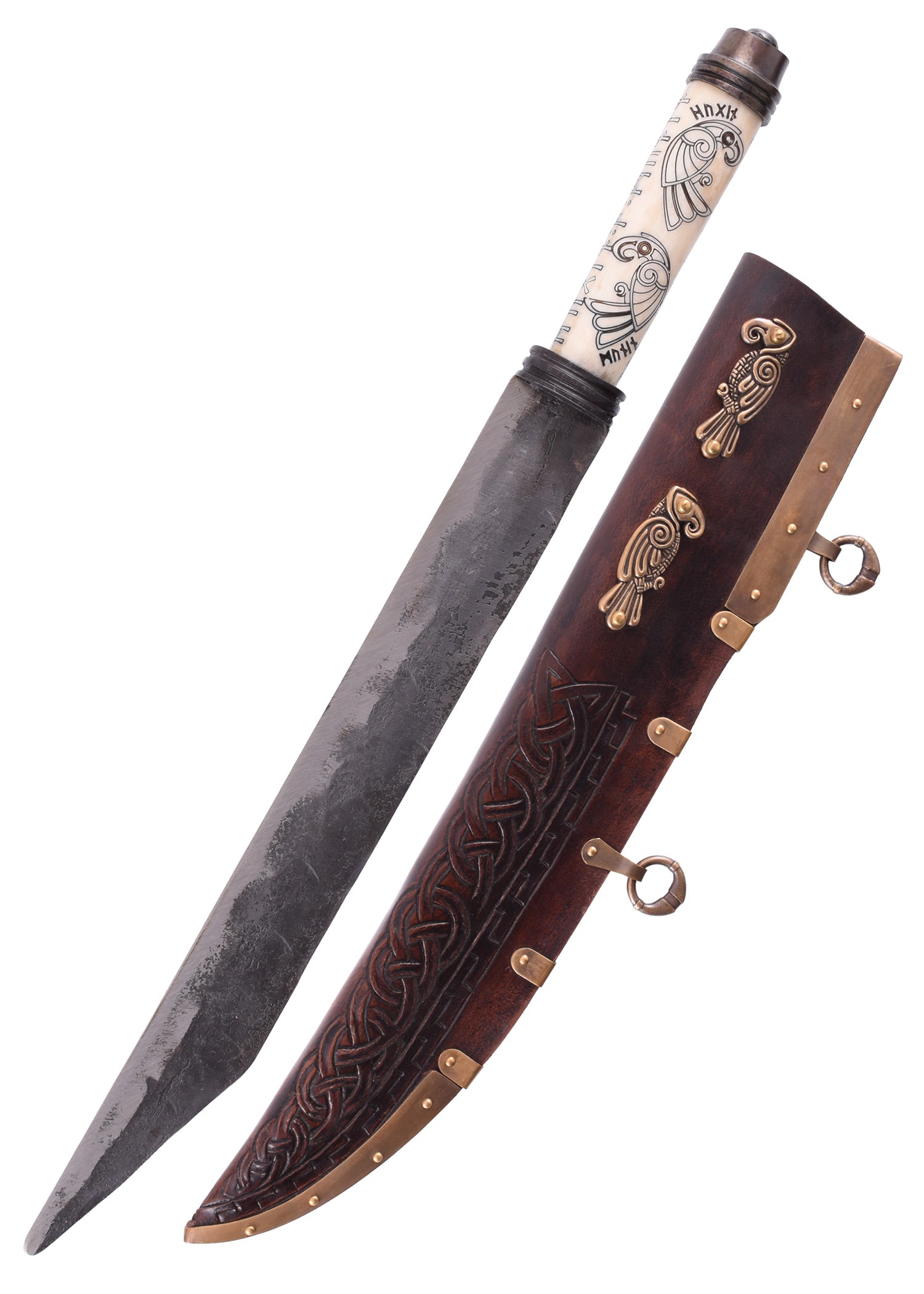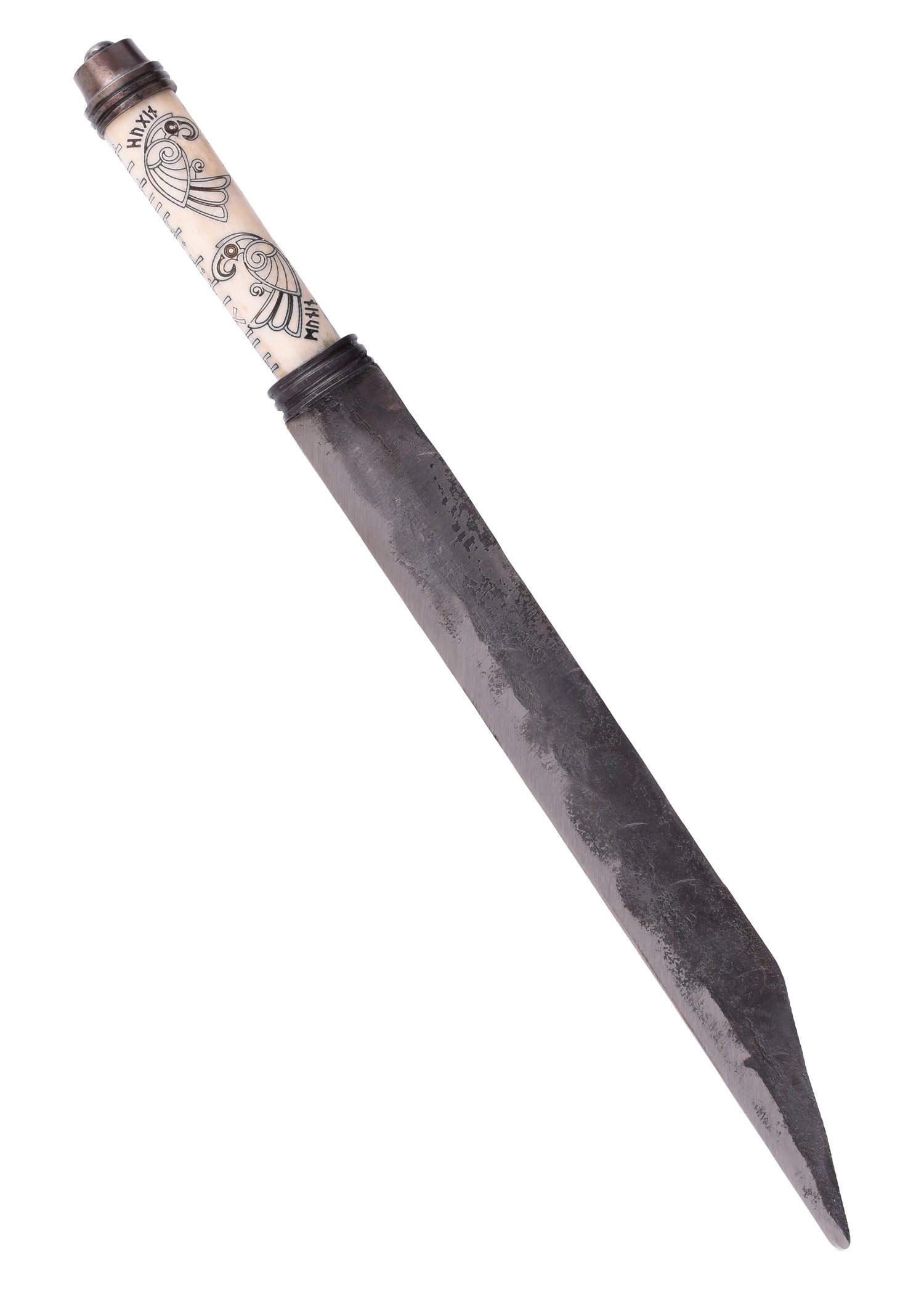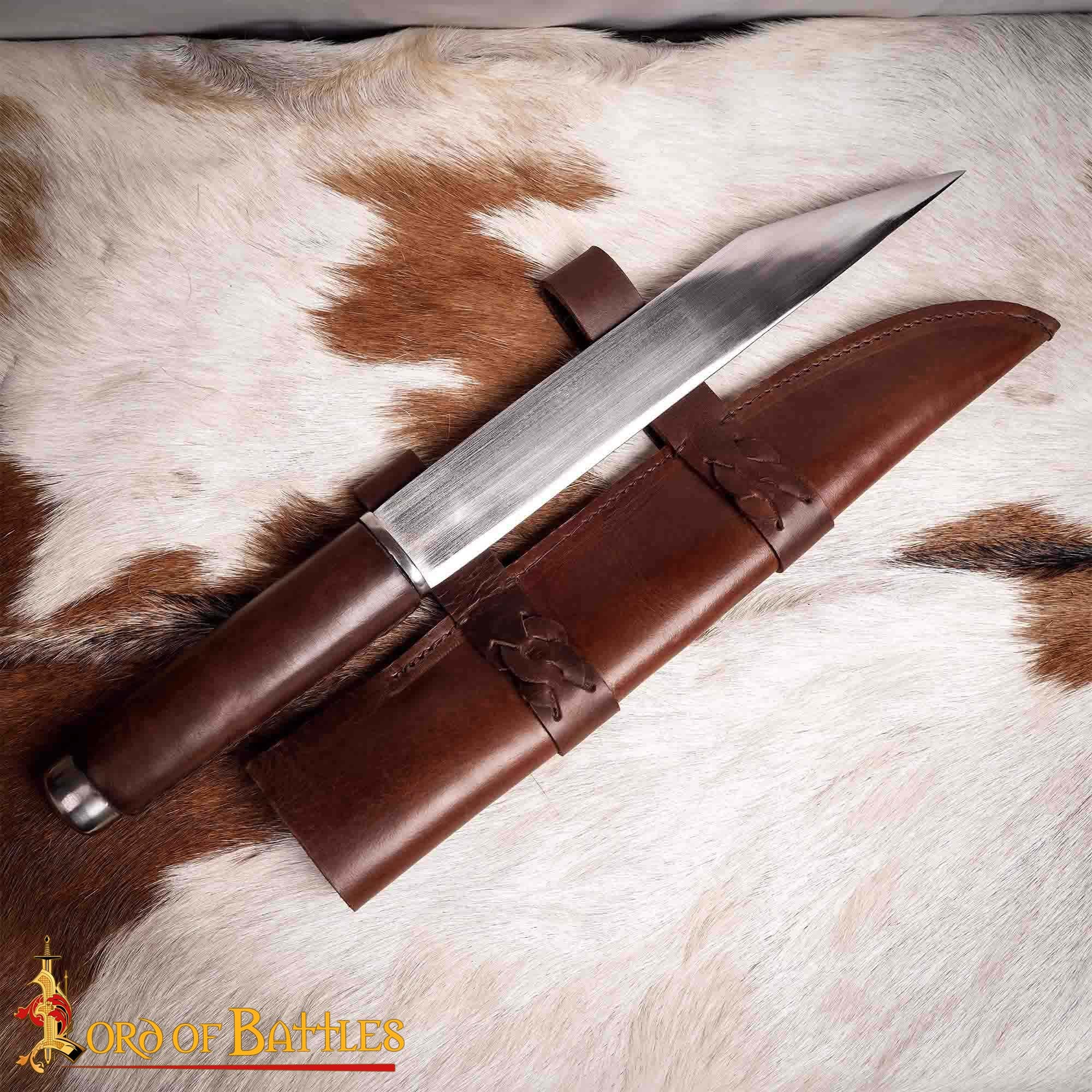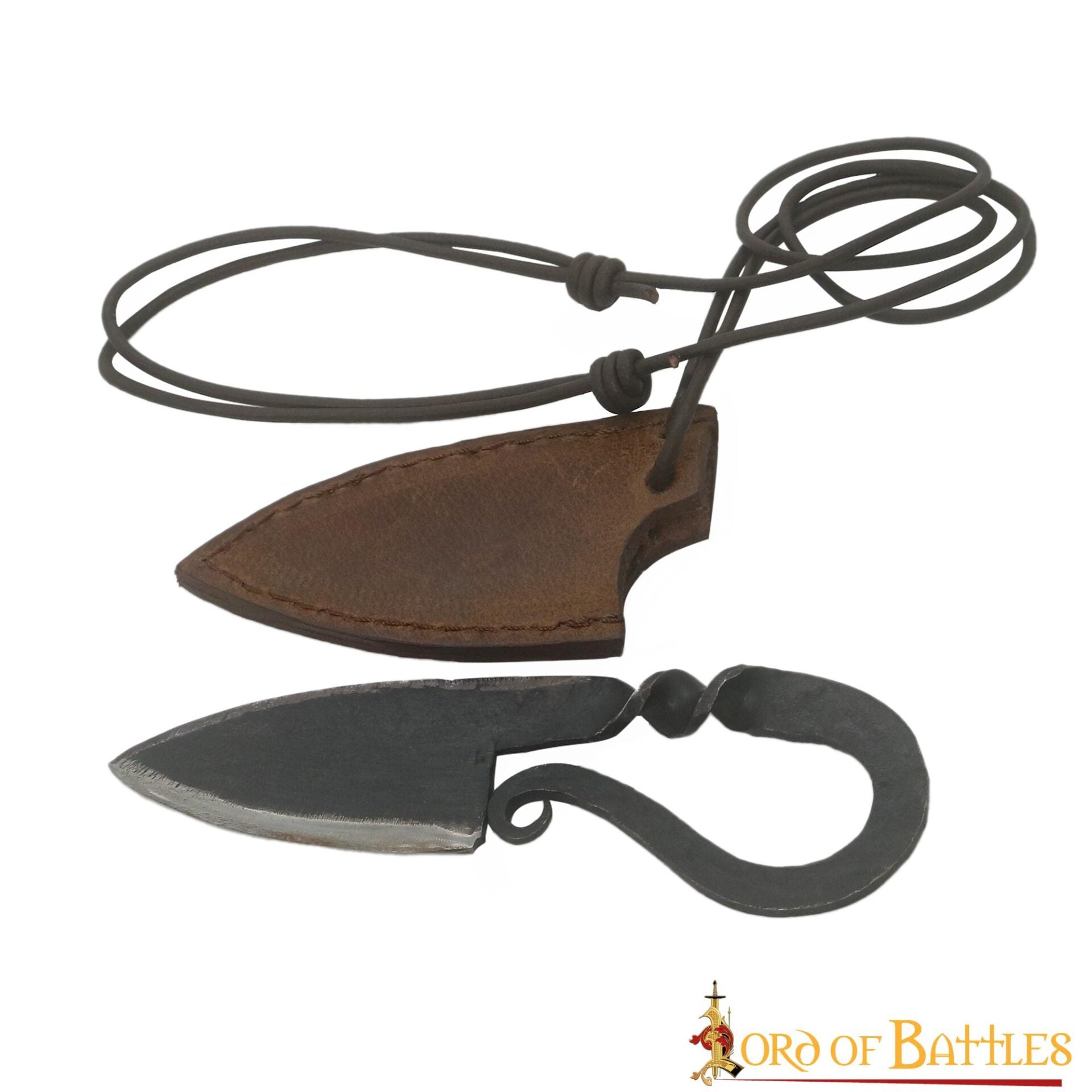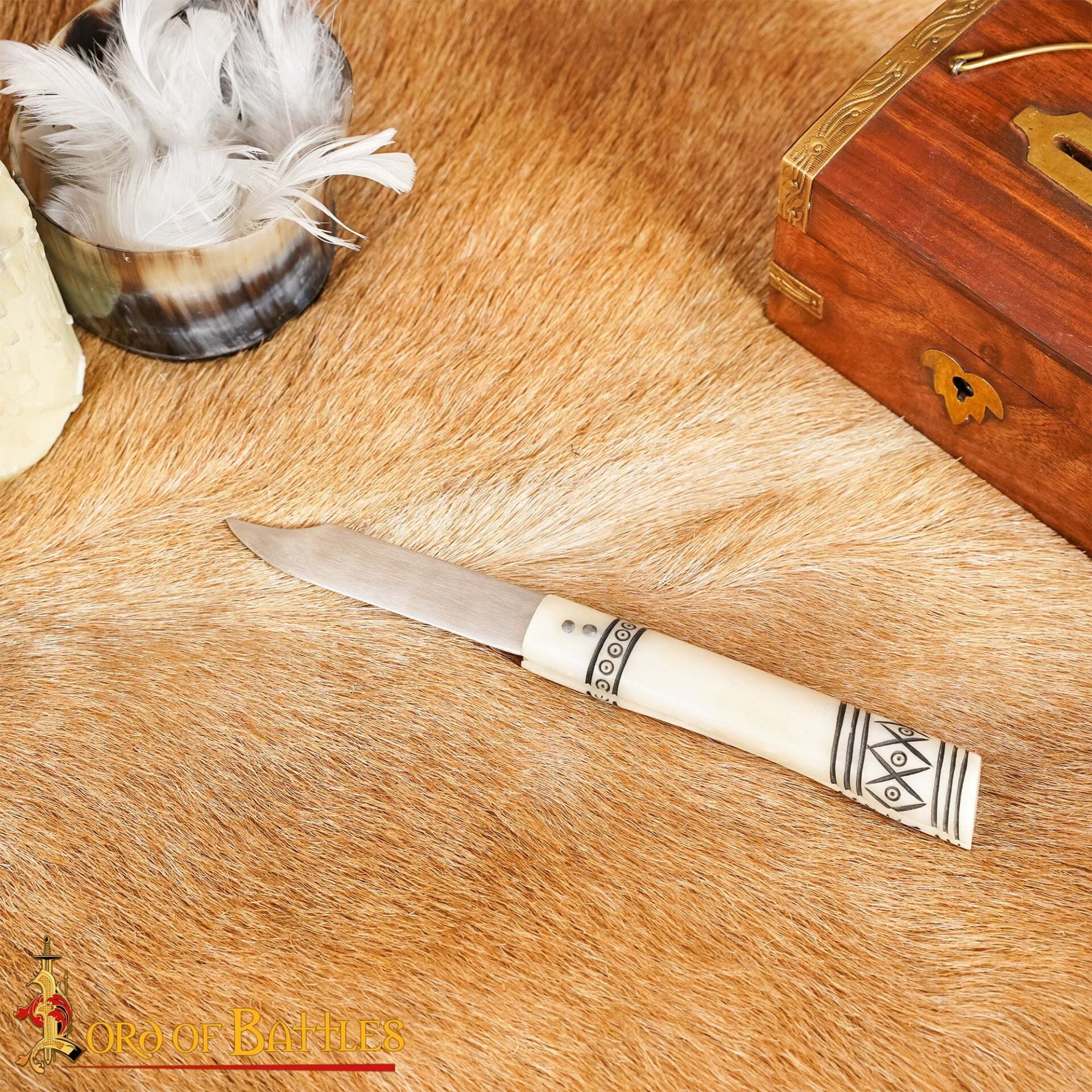Viking Knives – The Power of the North
In the mists of the fjords and under the aurora borealis, Viking knives were much more than simple tools: they were status symbols, work implements, and auxiliary weapons. Forged to withstand the harsh conditions of the North, they accompanied warriors and craftsmen on every journey, representing the practical yet fierce spirit of the Viking people.
Legendary Types: Seax, Sax, and Scramasax
The most iconic was the Seax (also called Sax or Scramasax ), a single-edged knife characteristic of the Vikings, Saxons, and Germanic peoples. There were smaller versions for everyday use and longer models—the Long Seax —that were almost the size of a short sword. Its straight or slightly curved blade and characteristic angular point, known as the broken-back seax , offered a functional, durable, and easily sharpened design.
Uses in Viking life
The Seax knife was an indispensable tool in everyday life. It was used for cutting meat , carving wood , preparing leather , and performing household and travel tasks. In combat, it functioned as a secondary weapon when a sword or axe was out of reach, and it was also a symbol of freedom and personal self-defense.
Manufacturing materials
The blades were forged from carbon steel or welded iron with different layers, achieving a balance between hardness and flexibility. Some noble pieces, such as the legendary Seax of Beagnoth , featured copper, silver, or bronze inlays and runic engravings that invoked protection and strength. The handles were made of wood , horn , or bone , joined with metal pins, and the reinforced leather scabbards allowed them to be worn horizontally on a belt.
Other notable Viking knives
In addition to the classic Seax, there were variants such as the longer and heavier Continental Skramasax , used by Frankish and Danish warriors; and the Type II Seax , with a straight back and raised point, very common in the 9th century. Some recovered examples feature geometric decorations and polished antler handles, demonstrating the knife's aesthetic and symbolic importance in Scandinavian culture.
A legacy forged in the North
Viking knives represent the perfect union of utility and heritage. Each blade tells the story of a culture that dominated the seas and shaped its destiny with the blow of steel. Discover replicas of the Seax , Skramasax , and other Norse knives at the Medieval Shop , and take a piece of Northern history with you.








